| Friday,
June 13 |
Depart
Vancouver, British Columbia |
| Saturday,
June 14 |
day
at sea: Inside Passage |
| Sunday,
June
15 |
Ketchikan,
Alaska |
| Monday,
June
16 |
Icy
Strait Point, Alaska |
| Tuesday,
June
17 |
Juneau,
Alaska |
| Wednesday,
June
18 |
Skagway,
Alaska |
| Thursday,
June
19 |
Hubbard
Glacier |
| Friday,June
20 |
Disembark
Seward, Alaska |
|
Optional Cruise Tour Extension |
| Friday,June
20 |
Seward to Anchorage to
Denali |
|
Saturday,
June 21 |
Denali
National Park, Alaska |
|
Sunday,
June
22 |
Fairbanks,
Alaska |
|
Monday,
June
23 |
return
home from Fairbanks |
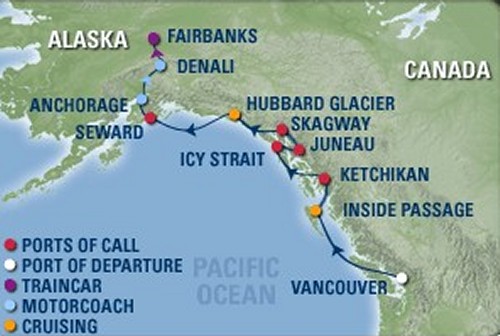
|
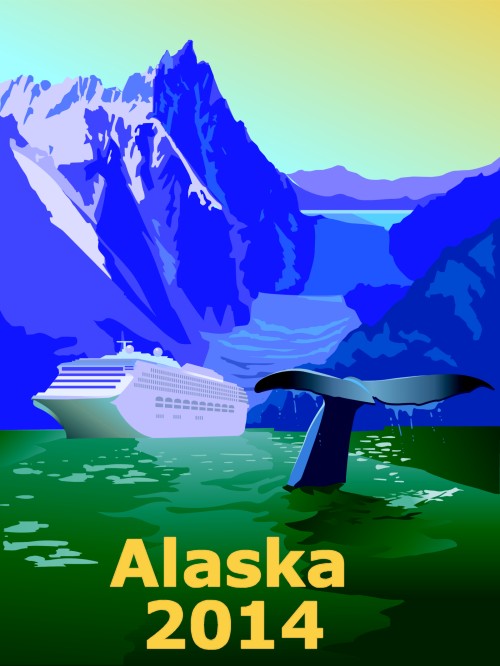 |
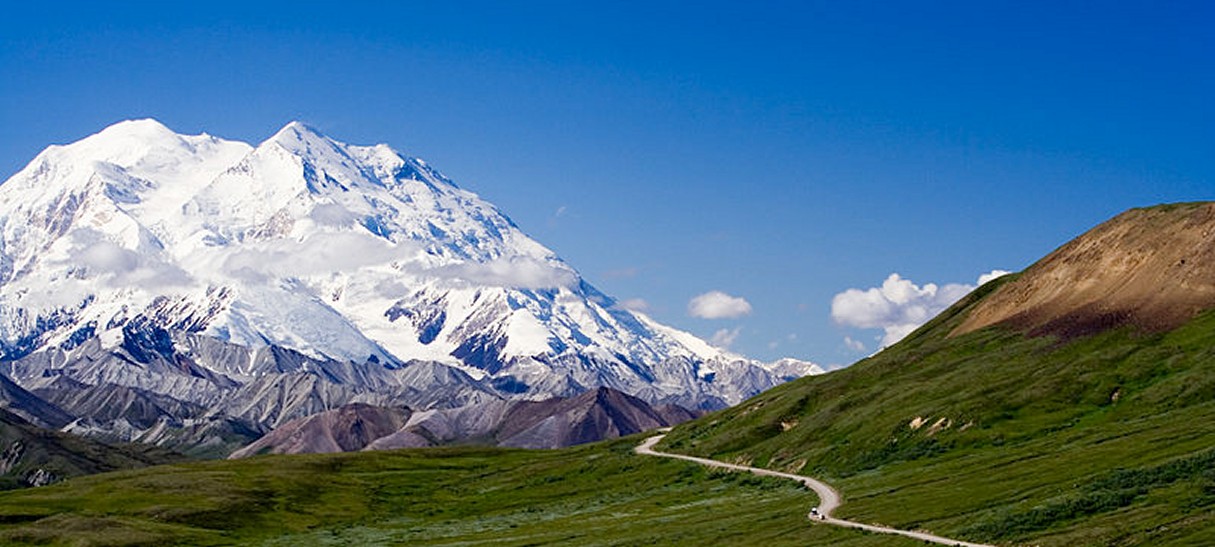
A Note
from Marla Archer:
Rick and I took
a group to Alaska in July 2005. I was still pretty new
to the travel business. This was only our 7th cruise at the
time. I was pretty nervous because this was the first
trip I had ever organized outside of the usual Caribbean
jaunts.
To my pleasant
surprise, our group responded well to the thought of
traveling a long distance to see a part of the world that
was brand new to most of us.
And how
spectacular was Alaska!! Oh my, the beauty of Alaska
is simply breath-taking. What I remember most was the
sheer expanse and the enormous panoramas.
I was amazed at
how rare it was to see even the slightest hint of man and
civilization. As our ship passed the shoreline, Rick
and I spent hours upon hours staring out at forests and
mountains and rivers and islands that were completely
unspoiled by mankind.
I got the
impression that the landscapes I viewed were exactly the
same as they have been for centuries upon centuries.
Our 2005 trip
was nothing short of amazing. We saw glaciers, we saw
whales and we saw eagles. We walked through a thick
Nordic rainforest in Juneau. We took an exciting train
ride into the mountains all the way to Canada at Skagway.
We took a plane ride to see the Misty Fjords in Ketchikan.
Rick and I agree that plane ride was the most exciting trip
we have ever been on. We saw primitive landscapes that
were beautiful beyond description. What memories!
One year from
now I will get my chance to do it all again. What a
joy. Even better, I will have all those same
experiences plus something new: an exciting 3-day trip into
the Alaska frontier.
If I had one
fuss, just one little fuss about that 2005 trip, it would be that
I was unable to travel deep into the Alaska frontier and see
some of the stunning interior landscapes.
So I am excited
about this new trip to Alaska because the cruise line offers
a three-day extension that takes up us all the way to Denali
National Park. The beauty of Denali is the stuff of
legends. We will have an entire day to explore.
I am excited because I will get the chance to see Mount
McKinley, the highest mountain peak in the entire United
States.
Unlike most
cruise trips where you spend the majority of your time at
sea, this particular trip is special because it is almost
like a river cruise. The ship winds in and out of an
endless chain of small, densely forested islands. One
thing I will never forget is just how deserted Alaska is.
There are no homes and no people practically everywhere we
went.
As our cruise
ship sailed past forest upon forest, glacier upon glacier,
mountain range upon mountain range, I couldn't help but
think this is exactly what Alaska has looked like for eons.
This vast frozen
wilderness is so perfectly preserved that you can view our
Final Frontier just as the Indians did who first crossed the
Bering Strait back at the beginning of man.
You have heard
one person after another rave about their trip to Alaska.
Practically the first thing they say is they want to go
back. Rick and I definitely fall into that category.
We can't wait!
If you like
nature, this is definitely the trip for you. Talk
about action. Every day has something special in
store. Even the one day we are at sea is wonderful. As we
sail through the Inside Passage, the scenery is so stunning
you will be mesmerized. There is no wasted time on this
trip. I guarantee you will be endlessly fascinated
from start to finish.
Marla Archer
June 2013
|
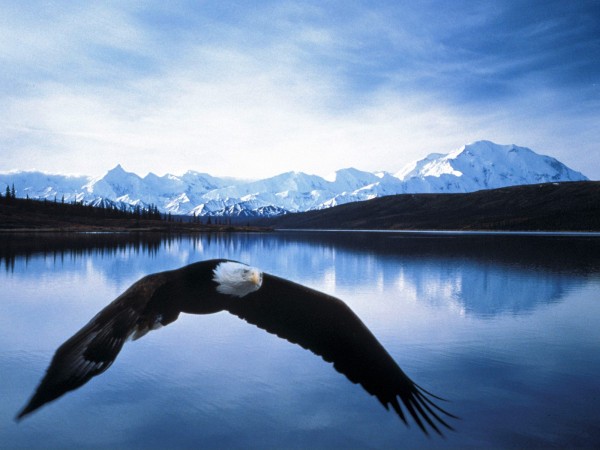
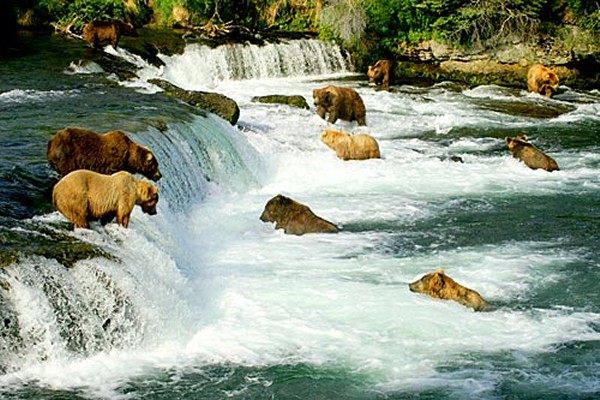
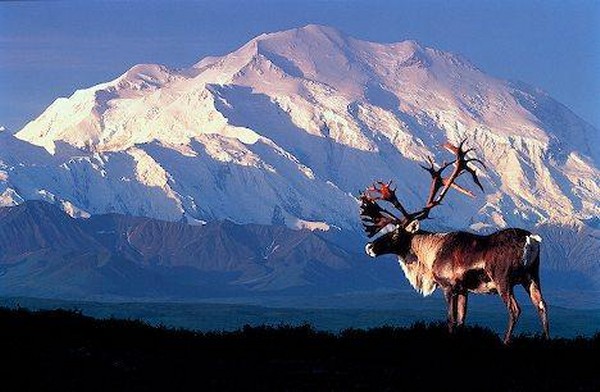 |
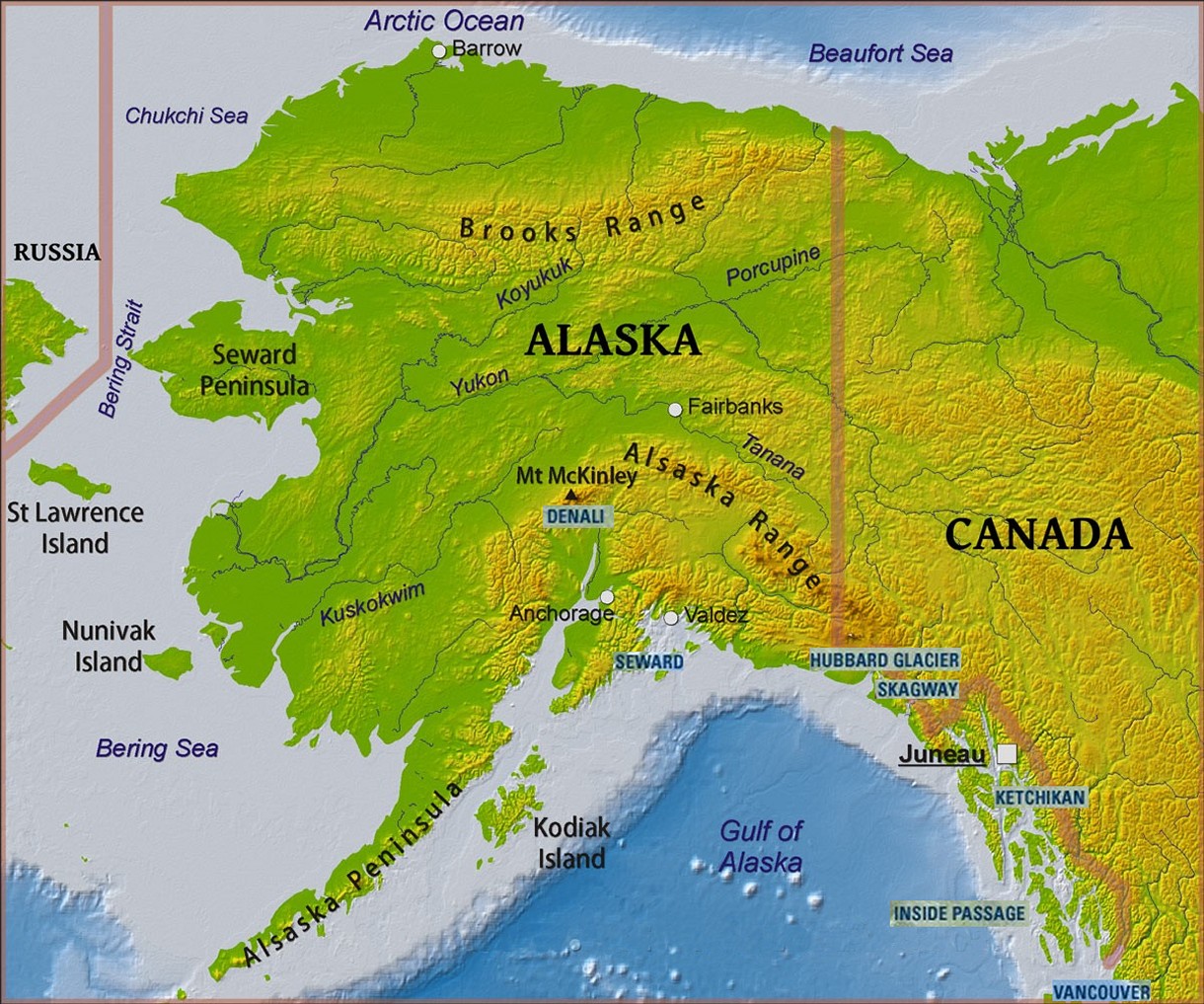
|
Pricing: Cruise Only |
|
Inside Category M
-- Deck 7, 8 |
$0846 |
|
Oceanview Category H Deck 3--
|
$1015 |
|
Balcony Category E2 -- Deck 7, 8, 9, 10
|
$1575 |
|
Cruise
Plus
3-Day Extension to Denali |
|
Inside Category M
-- Deck 7, 8 |
$1860 |
|
Oceanview Category H --
Deck 3
|
$1970 |
|
Balcony Category E2 -- Deck 7, 8, 9, 10 |
$2390 |
Marla's Note: The Extension prices include the cost
of your
cabin. For example, it is NOT $846 PLUS $1860 if you are in
an Inside Cabin. $1860 covers Cabin AND Extension. |
|
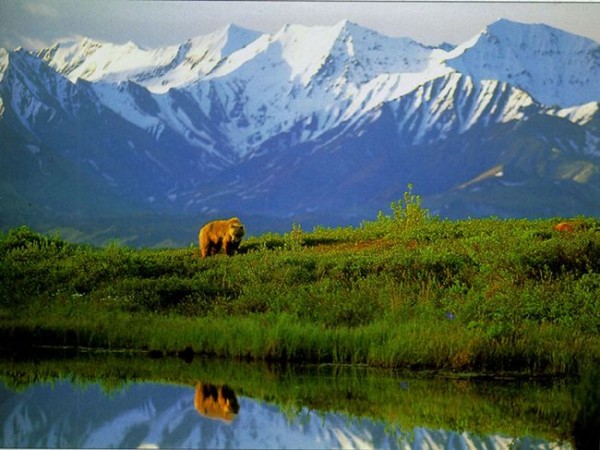 |
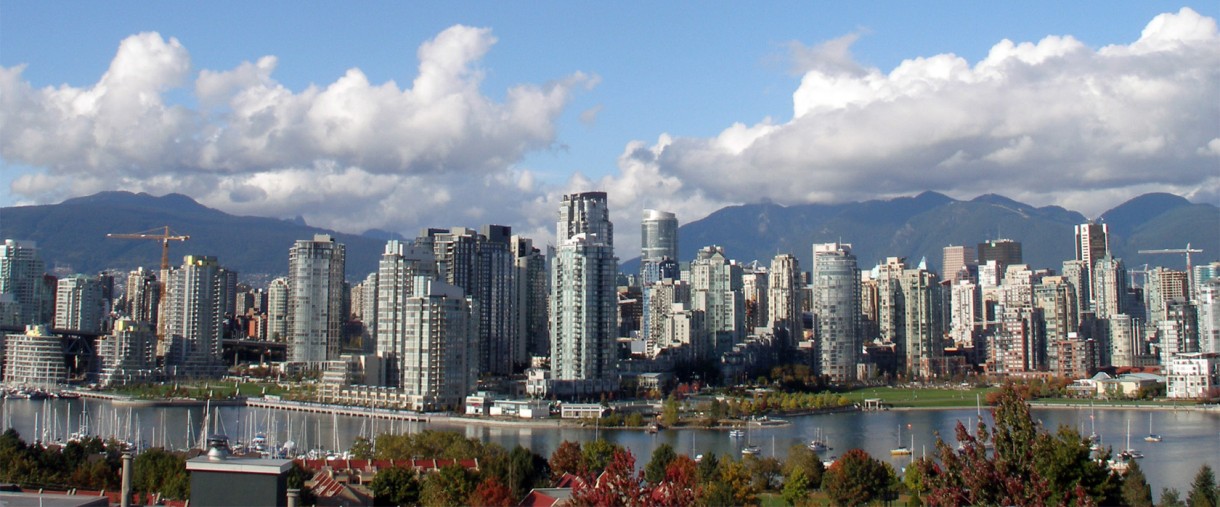
Our trip begins in Vancouver, the capital
of British Columbia in Western Canada.
Marla's
Note: In a moment I will list all the various places
to visit, but first a personal observation.
Vancouver is definitely one of the ten prettiest cities
I have ever seen. In particular, if you like
gardens and nature, this city has all sorts of lush
parks to visit.
Vancouver is renowned for its
scenic beauty and endless opportunities for outdoor
activities, Vancouver is also a cosmopolitan city with all
the urban amenities - fine dining, shopping, museums,
galleries, music and theatre.
Vancouver was recognized as the Top City in Canada in Condé
Nast Traveler magazine's 2012 Readers' Choice Awards.
The city was also named the Top Destination in Canada in
TripAdvisor's 2012 Travelers' Choice awards, and was chosen
as the world's "Most Liveable City" in the world in 2010 by
the Economist Intelligence Unit (EIU), a title it has been
awarded eight times since 2002.
Vancouver is a picturesque city surrounded by the waters of
the Pacific Ocean and the snow capped peaks of the Coast
Mountain range. Vancouver is Canada's third largest city
with many unique neighborhoods to explore including Gastown,
Yaletown, Chinatown and the West End.
Visitors can enjoy world class
shopping, gourmet meals, outstanding live entertainment,
sporting events, theatre, outdoor adventure and world-class
attractions.
From neighborhood green spaces to world-ranked sanctuaries,
Vancouver's parks are treasured, and more importantly, used.
They are the backyard of the city - places like Pacific
Spirit Park where residents walk the dog and Capilano River
Park where they take the kids to learn about salmon.
They are where people walk and
picnic and play. They are the romantic places where love
begins and they are the pretty places like Queen Elizabeth
Park where couples take their wedding photos. They are Lynn
Canyon where hikers challenge themselves physically and they
are Lighthouse Park a place to pull up a log and watch the
boats sail by.
Stanley Park
(Marla's
Hint: Stanley Park is where I am headed first)
Only have time to do one thing in
Vancouver? Cycle or stroll along the Stanley Park seawall, a
paved 6 mile
loop with magnificent mountain, ocean, forest and city
views. While in Stanley Park, visit to the
internationally-acclaimed Vancouver Aquarium, one of North
America's five largest aquariums.
What's special at Stanley Park
The Vancouver Aquarium, Canada's largest aquarium
facility, is located in the heart of the park.
Learn about Aboriginal traditions at Klahowya Village, a
fun, interactive display featuring hands-on crafts, cuisine,
art kiosks and Spirit Catcher mini train tour.
Great blue herons and bald eagles nest in the top branches
of old growth cedar, hemlock and fir.
Playground, tennis courts, a pitch and putt golf course and
playing fields.
Brockton Point totem poles.
Outdoor heated pool at Second Beach, water park at
Lumberman's Arch and beach bathing at Second and Third
beaches.
Miniature train carries 200,000 happy passengers over
trestles, through tunnels and back to the station through an
enchanting forest.
Stanley Park Horse-Drawn Tours gives informative tours of
park highlights from the comfort of an old fashioned
carriage pulled by horses.
TUTS -Theatre Under the Stars - a musical theatre tradition
at Malkin Bowl each summer.
Four full-service restaurants and several concessions.
Rose and Perennial gardens.
Queen Elizabeth Park
Perched on the hill that marks the
highest point in the city, this urban park with its
manicured gardens and extensive horticulture displays is a
prime location for wedding photographers.
What's special about Queen Elizabeth
Park
The Quarry Gardens - an excavation site that was reborn as
the dramatic setting for seasonally cultivated gardens.
Bloedel Conservatory - a glass-covered dome celebrating all
that is tropical: koi fish, plants, trees and free-flying
tropical birds.
The Arboretum - an expanding collection of some 1,500
specimen trees.
Painter's Corner - displays the work of local landscape
painters and portrait artists.
Expanses of green space and mature
broad-leafed shade trees that encourage picnics and
gatherings and lazy afternoons with a good book.
Athletic activities: lawn bowling, tennis and Tai Chi in the
morning.
A par 3 pitch and putt golf course in a park setting.
A full-service, upmarket restaurant with magnificent views
of the city.
See the City from above
The Vancouver Lookout has been one of the most iconic and
recognizable landmarks in the city. The Observation Deck is
situated in the heart of the city high above Vancouver and
the perfect first stop for visitors and locals, providing a
breathtaking bird's eye view of one of Metro Vancouver's
cosmopolitan downtown and the suburbs beyond. Glass
elevators whisk visitors 430 feet skyward to the Vancouver
Lookout in a mere 40 seconds. Here you will enjoy a riveting
and spectacular 360º view of the city. Enjoy the view day or
night as tickets are valid all day.
Appreciate nature from three breathtaking perspectives -the
world famous Capilano Suspension Bridge, the seven bridges
of Treetops Adventure & the thrilling new Cliffwalk, a
heart-stopping journey along the granite cliff high above
Capilano River.
The 450 ft long, 230 ft high Capilano Suspension Bridge has
thrilled visitors since 1889. While the wobbly bridge has
become a Vancouver landmark, Capilano Suspension Bridge Park
offers an all-encompassing BC experience. History, culture &
nature are presented through knowledgeable staff and
interpretive signage.
Neighborhoods
One of Vancouver's best attractions is its rich mosaic of
neighborhoods. Ethnically and culturally diverse, each
Vancouver neighborhood has a distinct, yet always welcoming,
personality.
Sample dim sum and authentic Asian cuisine in Chinatown and
immerse youself in Chinese culture. Wander the bustling
cosmopolitan shops on Robson Street, a shoppers mecca.
Relax on the patio at a trendy Yaletown micro-brewery.
Admire historic buildings and saunter the cobblestone
streets of Gastown, a National Historic Site, or marvel at
the array of market vendors at Granville Island.
Chinatown
Vancouver has been home to a vibrant Chinese community since
the mid-19th century. Today, Vancouver's Chinatown is one of
the largest in North America and provides an an authentic
Asian encounter complete with unique architecture, exotic
culinary aromas and an array of imported goods.
No visit to Chinatown is complete without a trip to the Dr.
Sun Yat Sen Classical Chinese Garden.. A tranquil Ming
Dynasty-style garden, it is the first authentic classical
Chinese garden to have been built outside of China.
The Chinese Cultural Centre Museum and Archives presents an
impressive collection of Chinese memorabilia. It also houses
the Chinese Canadian Military Museum.
Make sure to see the Sam Kee Building. At just 6ft wide,
it's the world's most narrow office building - and easy to
miss!
On weekend evenings from late May through to September,
thousands of visitors pour into the closed streets for the
popular Chinatown Night Market. The Asian-style flea market
offers a host of great finds.
Chinatown can be found just east of downtown Vancouver. Be
mindful of the fact that Chinatown, while very safe, is
located in a more graphic part of the city.
Robson Street
Energetic Robson Street is the place to see and be seen in
Vancouver, and boasts more than 200 shops, cafés and
services.
Spend a day on the strip - try on outfits at trend-setting
fashion boutiques or sip a latté while people-watching from
a sidewalk café. With a weekend average of some 80,000
streetgoers, there are plenty of people to watch!
Prefer less jostling among crowds? Head to the Vancouver Art
Gallery. Housed in a former early-20th-century courthouse,
the VAG is a haven for art lovers.
Finish the day with dinner at one of Robson Street's many
fine restaurants.
Robson Street runs east-west through downtown Vancouver,
from Yaletown to the West End. Parking on Robson Street can
be a challenge because of its popularity; there are several
parkades located within easy walking distance.
Yaletown
Once a gritty area of loading bays and brick warehouses,
Yaletown has undergone a facelift and is now a stylish mix
of the fashion-savvy, dot-commers and celebrities. It is the
neighbourhood of choice for urban trendsetters, both as a
nighttime destination and a New-York-loft-like place to call
home. Yaletown's streets are surrounded by condominium
buildings towering over renovated brick-warehouse lofts.
Some of the city's hippest destinations are here: high-end
galleries, chic fashion and furnishings boutiques. Swanky
restaurants, brew pubs, trendy salons and even movie sets
also share its narrow streets.
Yaletown sits at the southeastern tip of downtown Vancouver;
parkades and meter parking are available.
Gastown
The historic district of Gastown is Vancouver's oldest
neighbourhood. Still as colourful as ever, it is a favorite
destination of tourists.
A daytime stroll down Gastown's cobblestone streets reveals
artist studios, designers' shops, First Nations' galleries
and antique stores in refurbished heritage buildings.
Gastown is also home to the world's first steam-powered
clock, now one of the city's most photographed attractions.
Gastown's structures share a common Late Victorian and
Edwardian look that harkens back to the region's development
in the late 19th century. Check out the old Canadian Pacific
Railway Station of 1912 for a tangible example of the
decorative tastes of the time.
Gastown is within easy walking distance of downtown
Vancouver. Be mindful of the fact that Gastown, while very
safe, is partially located in a more graphic part of the
city
Granville Island
Hop on a water taxi, salute the view of the downtown skyline
and get ready to spend an enjoyable day at Granville Island.
An eclectic mix of shops, boutiques and galleries, Granville
Island is perhaps most famous for its large and bustling
Public Market, where local food vendors and artisans peddle
their wares.
Browse the charming shops of the Net Loft, where retailers
offer everything from exotic stationary to beads of every
shape and kind, funky hats, First Nations gifts, books and
locally-made fashions.
The Maritime Market clusters together retailers who
specialize in all things ocean related: boat and kayak
rentals, marine souvenirs and of course, seafood. There are
fishing charters available too.
Kids adore the Kids Market. Here, independent sellers of
atypical toys, books, games, clothing, candy and adventure
offer a refreshing alternative to the usual.
Granville Island is also dotted with an array of
arts-and-crafts studios and galleries dedicated to local and
regional work.
Granville Island is located across from downtown Vancouver,
under the Granville Bridge. Parking can be difficult to
find; consider coming by foot, public transit, bike, taxi or
water taxi
|
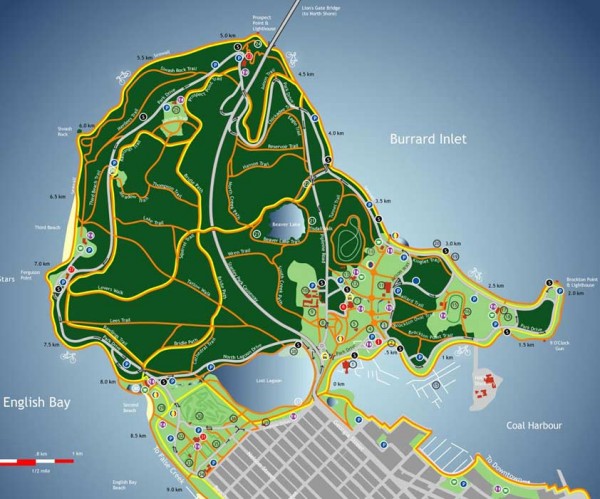
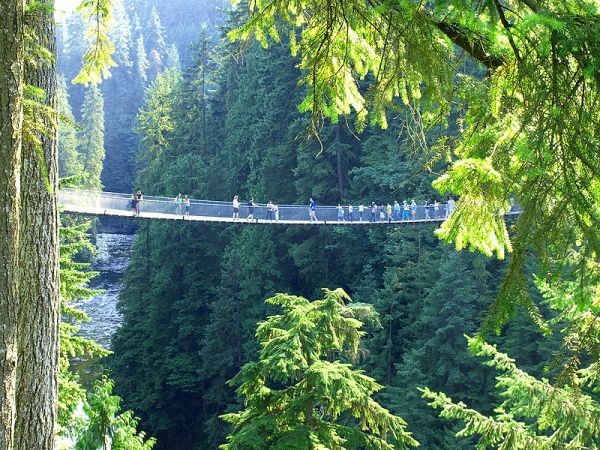
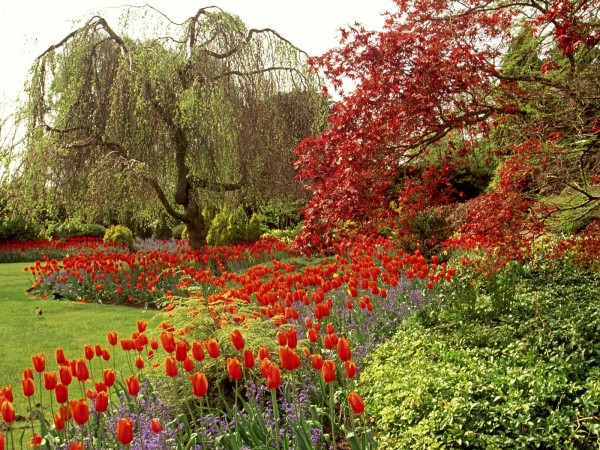
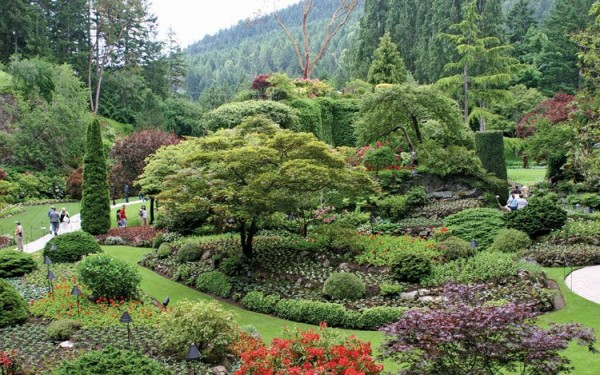
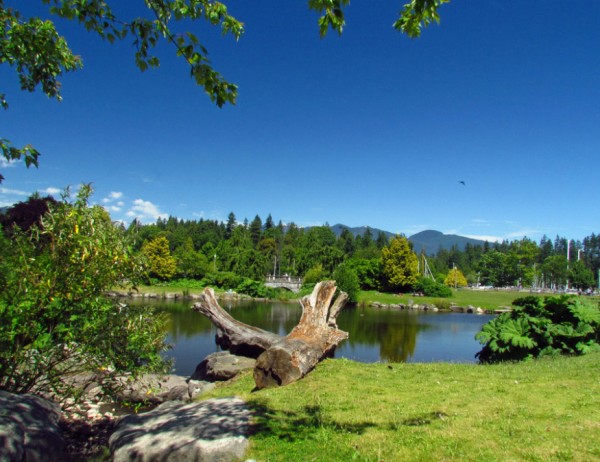
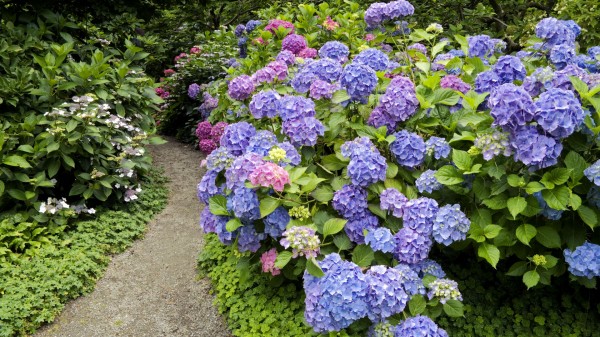
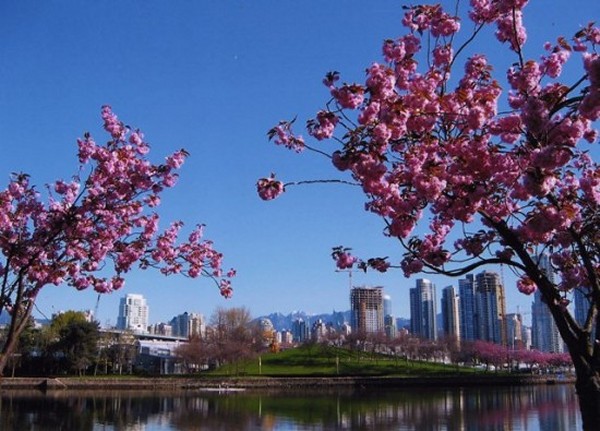
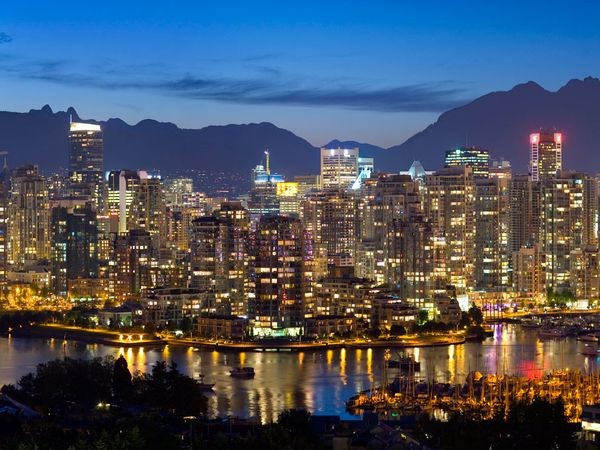

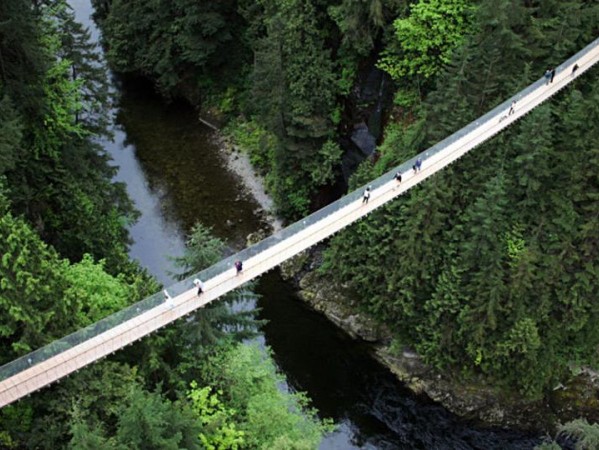
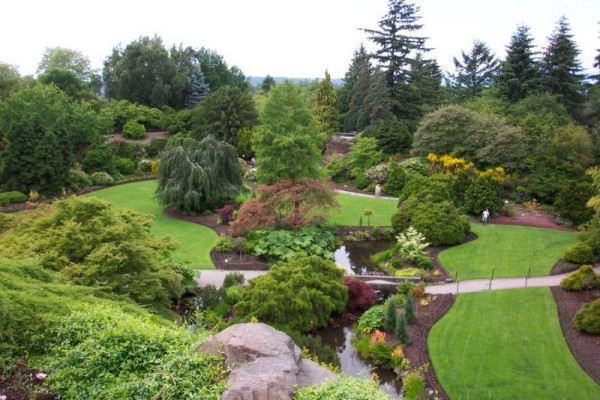 |
|
First Day: Inside Passage |
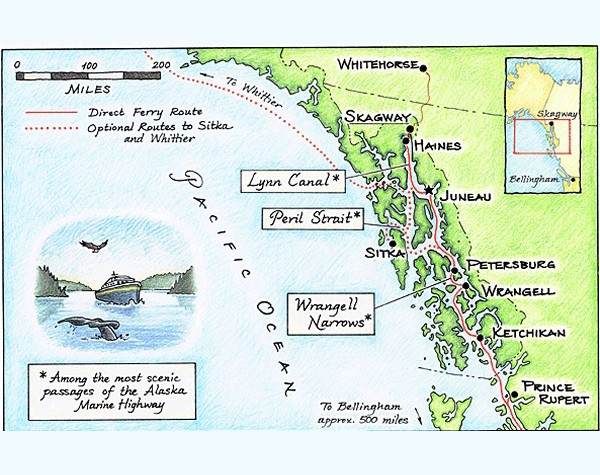 |
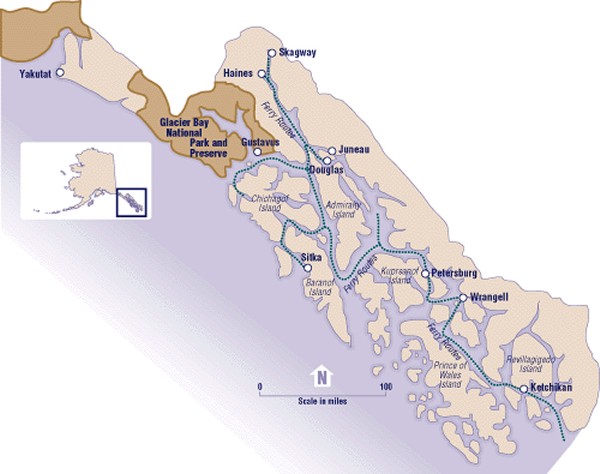 |
Wikipedia: The Inside Passage is a
coastal route for oceangoing vessels along a network of
passages which weave through the islands on the Pacific
coast of North America.
The term "Inside Passage" is also
often used to refer to the ocean and islands around the
passage itself. The Inside Passage is also sometimes
referred to as the "Inland Passage" which is in turn a
reference to early explorers' quests to locate the Northwest
Passage between the Pacific Ocean and the Atlantic Ocean.
The route extends from southeastern Alaska, in the United
States, through western British Columbia, in Canada, to
northwestern Washington state, in the United States.
Rick's Note:
Due to the
safety and the beauty, the Inside Passage is
heavily travelled by cruise ships.
It also happens to be the most direct route. On our Alaska 2005 trip, the
Inside Passage was one of my favorite parts of the trip.
The ship could just as easily put out to sea, but instead it
weaves its way between countless small islands.
The experience
you receive is very similar to a river cruise. You
have endless beautiful scenery that rolls past your eyes.
Surrounded on either side of the ship by nearby islands with
their majestic rainforests, you are given the same intimate
feeling you might receive while traveling through a Norwegian Fjord.
The beauty of the neverending landscape is truly something
to behold.
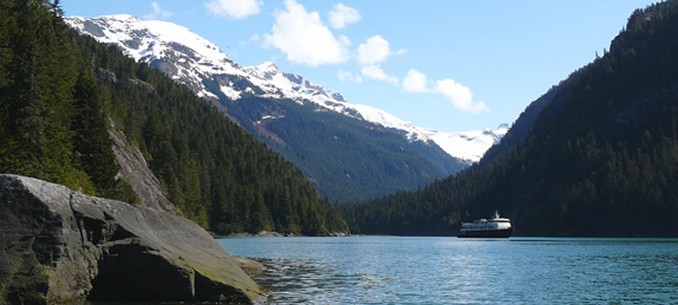 |
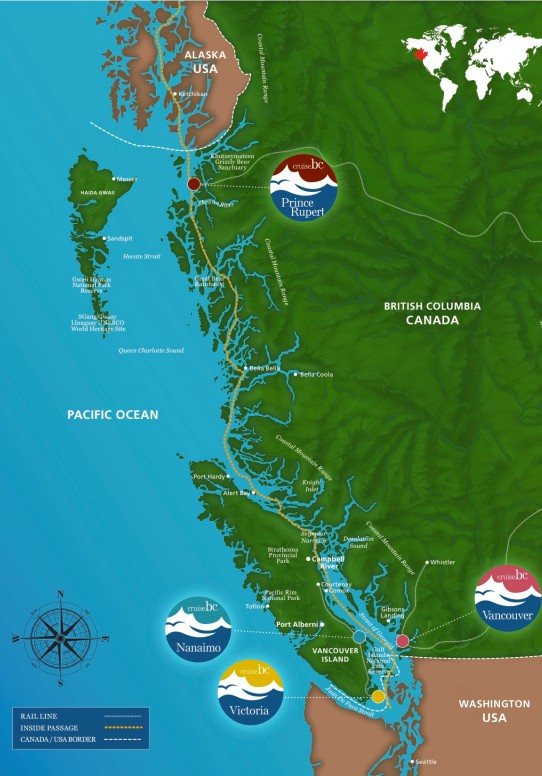 |
Ketchikan is known as Alaska's "first city" due to its
location at the southern tip of the Inside Passage.
Ketchikan is the first city you reach as you cruise
north. Consequently it serves
for many visitors as their
first introduction to the beauty and majesty of Alaska.
Located 90 miles north of Prince
Rupert, British Columbia, Ketchikan hugs the bluffs that
form the shoreline along the southwest corner of
Revillagigedo Island. Stretching 31 miles long but never
more than 10 blocks wide, Ketchikan is centered on Tongass
Avenue. On one side of the avenue, many businesses and homes
are built on stilts out over the water, while on the other
side they cling to the steep slopes and often have winding
wooden staircases leading to their doors.
Don't be surprised
if it rains during your visit. If you spend enough
time in Ketchikan chances are good it will rain at least
once. The average annual rainfall is 162 inches, but it has
been known top 200 inches. Local residents call it "liquid
sunshine" and umbrellas are rarely used.
Rain or shine, the beauty of
Ketchikan's setting is immediately apparent. The city is
backed by forested slopes and distinctively shaped Deer
Mountain and faces Tongass Narrows, a waterway humming with
floatplanes, fishing boats, ferries and barges hauling
freight to other Inside Passage ports.
Located 90 miles north of Prince
Rupert, British Columbia, Ketchikan hugs the bluffs that
form the shoreline along the southwest corner of
Revillagigedo Island. Stretching 31 miles long but never
more than 10 blocks wide, Ketchikan is centered on Tongass
Avenue. On one side of the avenue, many businesses and homes
are built on stilts out over the water, while on the other
side they cling to the steep slopes and often have winding
wooden staircases leading to their doors.
Things to do
The downtown area is the main commercial district and
contains two large harbors, several cruise ship docks, and
many of Ketchikan's main attractions, including historic
Creek Street, a boardwalk road built over Ketchikan Creek on
pilings. The city center is best viewed from Ketchikan's
Waterfront Promenade that skirts the busy shoreline and is
equipped with historical markers and whale-tail benches for
visitors to rest and take in the view.
The road system extends both north and south of the city and
leads to more parks, attractions and accommodations. RVers
often depart the Alaska Marine Highway and head north to a
handful of campgrounds including Settlers Cove State
Recreation Area at the end of the road, 18 miles north of
Ketchikan, where the sites are nestled among a lush
rainforest overlooking a scenic coastal area. To the south,
South Tongass Avenue leads to totems and hiking trails.
Ketchikan also serves as the departure point for side trips
to Prince of Wales Island, Annette Island, numerous bear
viewing sites and the area's most impressive attraction -
Misty Fiords National Monument. This 3,570-square-mile
wilderness is a natural mosaic of sea cliffs, steep fjords
and rock walls jutting 3,000 feet straight out of the ocean.
Trips into the monument, whether by tour boat, small
airplane or kayak, provide wildlife sightings like seals,
otters, bald eagles and whales.
Marla's
Note: Our seaplane ride through the Misty
Fjords back in 2005 was one of the most thrilling
adventures I have ever taken. I highly recommend this
particular excursion.
Probably the most scenic downtown
stretch is historic Creek Street, which is only a short
distance (three to four blocks) away from the cruise ship
docks. Once a raucous red-light district, and during
prohibition a row of speakeasies, these days Creek Street is
home to a quieter class of establishment but still retains
its delightful historic charm. Visitors walking downtown
should be sure to include it in their walking tour to see
the picturesque wooden buildings that stand on stilts above
Ketchikan Creek.
Summer visitors can look down from
the bridges that cross the creek and expect to spot salmon
gathering in the brackish waters near the creek mouth,
preparing to make their final ascent upstream, where they
will spawn and die. Depending on time, tide, and other
conditions you might also see a hungry harbor seal or two
cruising the creek mouth for easy prey
Ketchikan boasts the largest collection of original
19th-century totem poles in the world. Be sure to spend some
time at one of the 3 totem pole parks in the area-Totem
Heritage Center, Saxman Totem Park and Totem Bight State
Park-each brimming with majestic, multi-colored Tlingit and
Haida totems amid a spectacular rural setting.
The unbridled beauty and sheer size of Misty Fjords National
Monument in Tongass National Forest is a nature lover's
paradise, providing all who enter with sweeping views of
rugged mountain peaks, glaciers, rushing waterfalls, lakes
and wondrous wildlife that defy description.
Additionally, Deer Mountain Tribal Hatchery and Eagle Center
which overlooks Ketchikan
Creek, includes observation areas where you can glimpse
spawning salmon and enjoy an up-close encounter with 2 bald
eagles.
Another popular
thing to do is visit the Great Alaskan Lumberjack
Show. This is Alaska's version of
the Texas Rodeo. It celebrates Ketchikan's logging
heyday. You get to watch pros
compete at log rolling, axe throwing and pole climbing.
The show must go on even if it rains. The
bleachers, thankfully, are covered. The sometimes corny show
lasts about an hour, leaving plenty of time for shopping --
the port's shore activity of choice.
Local Culture and Flavor
With a population of approximately 7,800, Ketchikan is the
5th largest city in the state, despite being only 12 blocks
long. Because the city takes so much pride in its native
roots, it's impossible not to feel its influence wherever
you roam, be it in the city center or off the beaten track.
Major attractions boast towering totem poles celebrating the
various tribes indigenous to the area while shops both big
and small offer one-of-a-kind hand-carved items for
tourists.
Billed as the "Salmon Capital of the World," Ketchikan's
economy is-and always has been-primarily based on fishing.
The waters surrounding the town teem with 5 types of salmon:
King, Red, Silver, Pink and Chum, making it a destination of
choice for professional and amateur fishermen the world
over.
History
Founded as a salmon cannery site in 1885, Ketchikan's
livelihood was initially fishing and for years the city was
known as the "Canned Salmon Capital of the World."
By 1900, the fishing trade was flourishing and the town was
officially founded. Ketchikan, already successful from
industrial fishing, soon branched out and became a valuable
mining supply center due to the discovery of gold and copper
in the region, followed by a flourishing logging industry
that continued throughout the 20th century.
When cruise ships started plying the waters of the Inside
Passage, Ketchikan naturally became a popular port of call.
Today, Ketchikan remains a treasured tourist destination
where some of the world's most awe-inspiring natural wonders
share center stage with an intriguing and inspiring Native
Alaskan culture
|
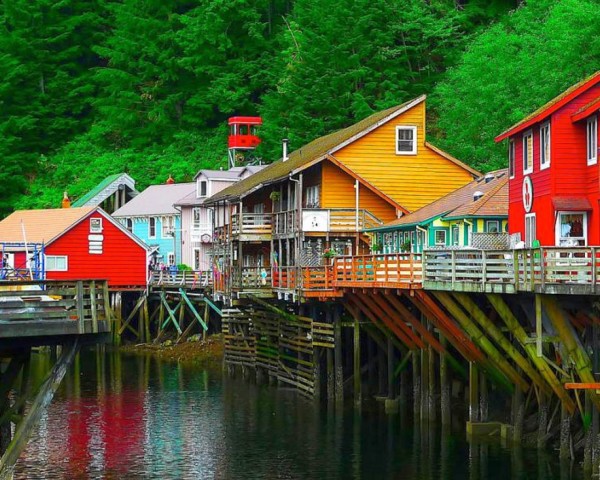
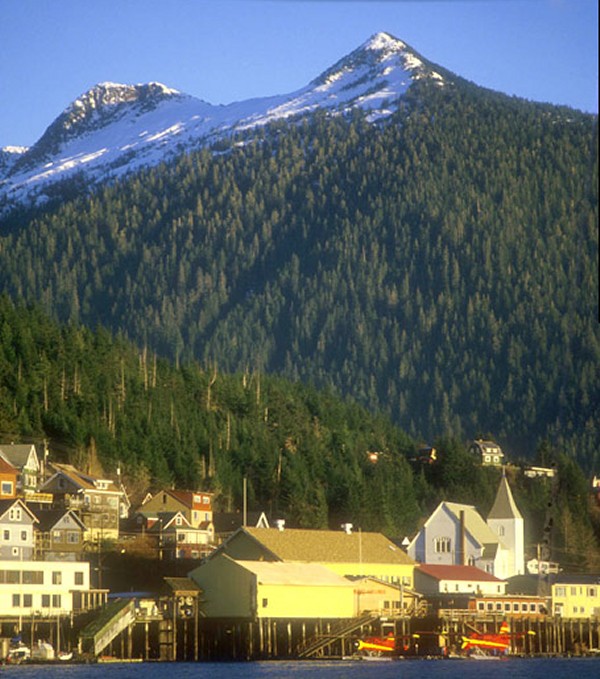
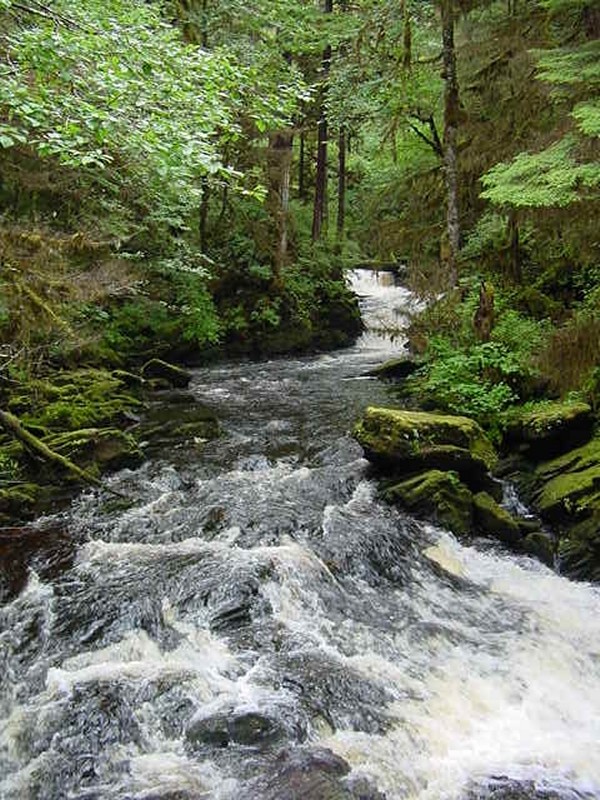
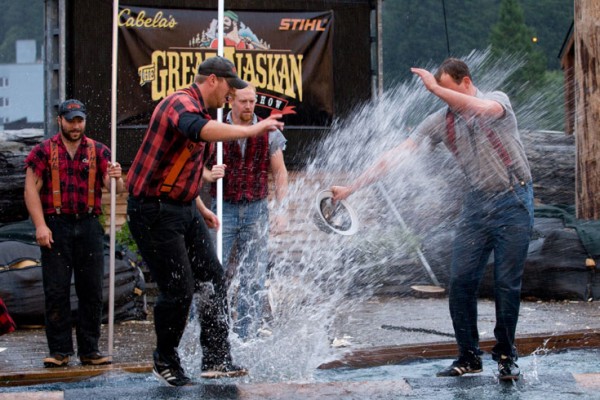
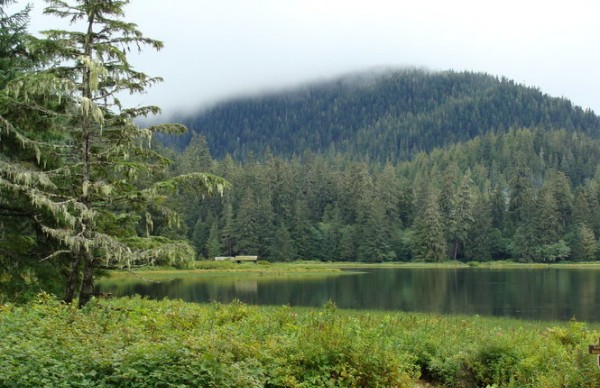 |
| |
|
|
 |
|
Icy Strait Point |
Icy Strait Point is located 35
miles west of Juneau in Hoonah, Alaska.
The location is organized around a salmon cannery owned by Huna
Totem Corporation.
The Tlingit people settled Hoonah two thousand years ago
when they were forced to abandon their original village
because of advancing glaciers. Translated, it means, "Where
the north wind doesn't blow".
The Tlingit - always respectful of their environment --
lived a subsistence life. For
centuries they survived off the bountiful
fishing waters
and lush forest. Many also became very accomplished as
weavers, carvers and artists -- developing the unique
stylized designs you see throughout Tlingit communities
today.
Fur traders arrived on Hoonah shores in the 1880's. Schools,
churches, and stores were soon to follow.
In 1912, the Hoonah Packing Company built the first cannery
in the area. Ownership traded hands several times before the
Icy Strait Salmon Company purchased the property in 1932.
When a fire destroyed the town on June 14, 1944, many
residents made the cannery their home while the city was
rebuilt.
Icy Strait Point was originally built as a Salmon Cannery
and has been an important part of the community for many
years serving many functions. In the mid 1990's the Huna
Totem Corporation bought the cannery and created
the salmon industry here.
Currently 85% of the staff at ISP are local Tlingit
from Hoonah.
For over 10,000 years, the Tlingits have lived and thrived
in Southeast Alaska. Access to abundant resources on both
land and sea have enabled the
Tlingit people to develop a rich culture and complex social
structure.
That structure and culture has
survived the ages and is still evident today. Each family
had a dwelling that could house up to 30 family members with
its own identification and clan symbols. Many villages had a
large communal building that would serve as a gathering
place for ceremonies and other clan or tribal meetings.
Childrearing was pretty much everyone's responsibility with
aunts, uncles or grandparents typically taking a stronger
role than the parents. This system helped to insure that
children would be properly trained and better able to
survive in an unforgiving environment.
When visiting ISP, visitors will be introduced to Tlingit
history through song, dance, and storytelling -- the same
way Alaska Natives have learned for generations.
So what's there to do at Icy Strait Point?
There is so much to do here.
Get out in nature, view Glacier Bay from the air, cruise
with the whales, search for brown bears, listen to Tlingit
Native stories, go Kayaking, experience Tlingit culture,
book a charter fishing excursion, watch the wildlife, or
ride the world's highest ZipRider.
Search for Whales, Wildlife, & Brown Bears
-- Imagine being in the midst of
humpback whales as they feed and frolic in the bountiful
waters of Icy Strait. Then imagine overlooking a wild salmon
stream, winding its way out amidst sedges and berry bushes,
and suddenly, a bear's head pops out of the grass, or
another one appears around the river bend. You can have both
of these experiences in one day! Ride a high-speed catamaran
through waters that support a wide array of marine life,
including orca (killer whales), Steller's sealions, seal,
porpoise, and of course the magnificent humpback whales.
Along the shore, keep your eyes peeled for bald eagles in
the evergreen treetops. The onboard naturalist will describe
the biology and behavior of the diverse species that gather
here every summer to indulge in the nutrient rich waters,
fueled by the long Alaska summer days.
Then cruise back to Icy Strait
Point where a local guide will meet you to begin the
Wildlife Search. The journey out to the Spasski River is a
tour in itself, as the bus travels through the Tlingit
village of Hoonah and, quickly, out through the interior
forests and muskegs of Chichagof Island. Watch for bald
eagles, woodpeckers, Sitka black-tailed deer and even Alaska
coastal brown bears all along the way. When you arrive near
the river, your guide will lead you down a gravel path
across a muskeg and to the river itself, all the way
describing and illuminating the rainforest ecology that
supports our island's massive bears.
Glacier Bay Flightseeing
Experience the grandeur of Glacier
Bay National Park and Preserve, one of America's premier
natural wilderness areas.
The scenery of the park encompasses 3.3 million acres and is
part of the largest internationally protected area in the
world. Fly over the feeding grounds for endangered humpback
whales at Point Adolphus. At the entrance to Glacier Bay,
view Lemesurier Island; the massive glaciers almost reached
this point before beginning their rapid retreat just 250
years ago. A giant sheet of ice covered all the area you
will see. As the flight continues, see how the de-glaciated
terrain is developing into lush rain forests of Spruce and
Hemlock that line the shores of Glacier Bay. Fly over
waterfalls, lakes, deep crevasses and azure blue meltwater
pools of Glacier Bay National Park and visit the world as it
was at the end of the Ice Age.
Zip Rider
You may also get a bird's eye view from The ZipRider. It is
not just a ride, it's a great tour on the way up
The Zip Rider is 5,330 feet long, has a 1,300 foot vertical
drop, goes 60 mph maximum speed, 300 feet highest point from
ground, with a 1.5 minute ride time. At 1,300 feet above sea
level, you sit into a special harness seat and await your
launch. Six guests launch at once, and it is a race to the
bottom! 3, 2, 1 and you're off, accelerating to 60 mph as
you pass 300 feet above the treetops. If your eyes are still
open you will see sweeping views of Port Frederick, Icy
Strait and our cruise ship far below. The ZipRide concludes
with a break-activated landing on the beach back at Icy
Strait Point.
|
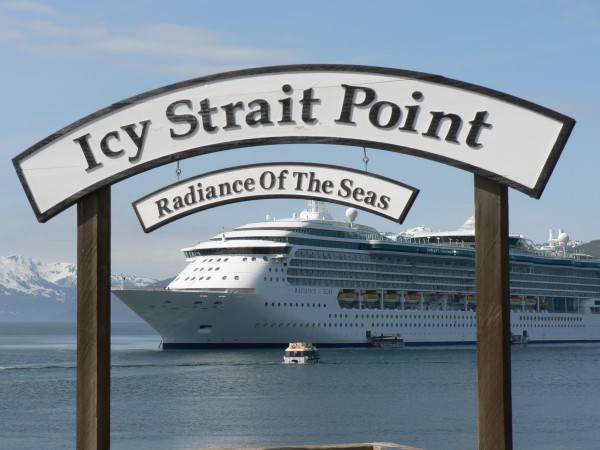
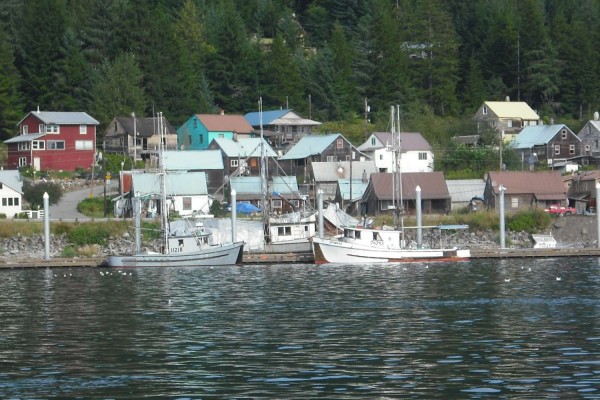
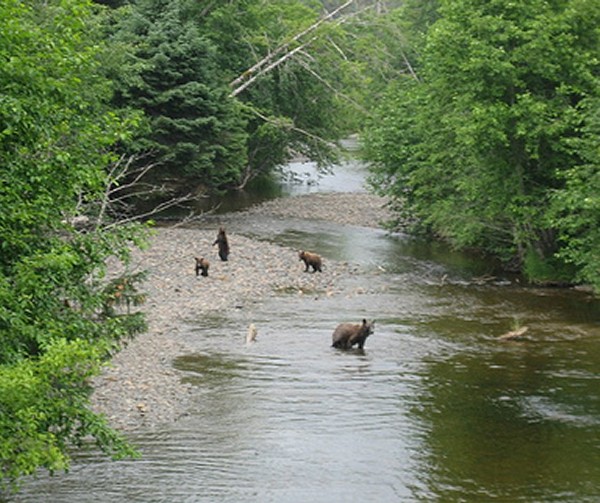
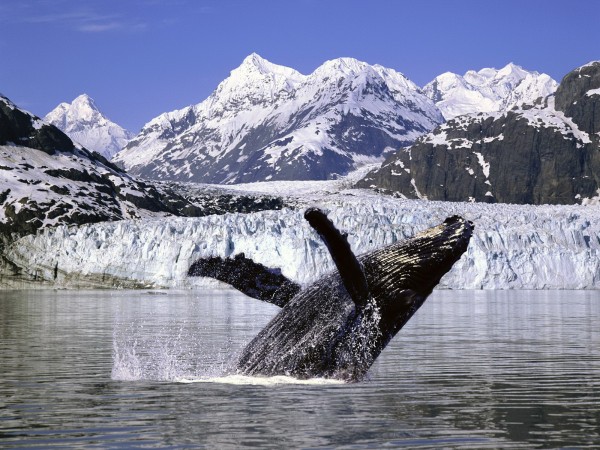
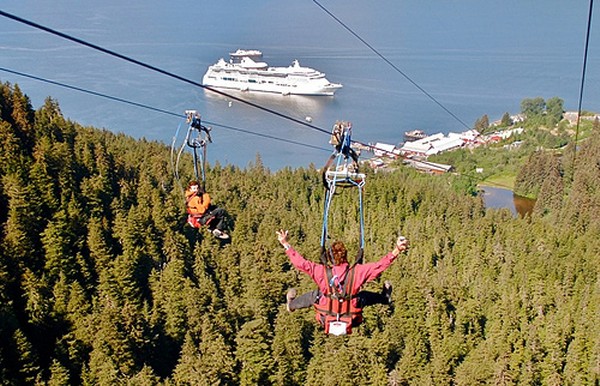 |
| |
|
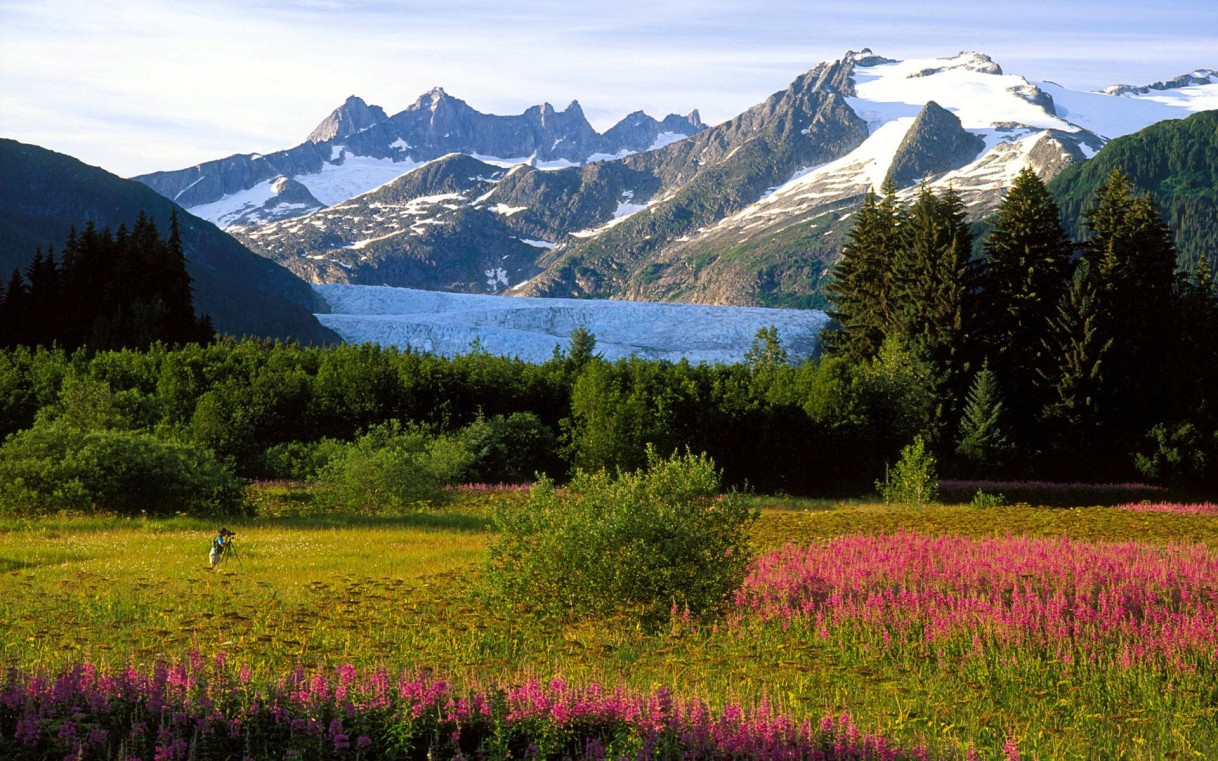 |
|
Juneau |
Juneau is the state capital of Alaska located along the
Gastineau Channel of southern Alaska's panhandle. Nestled at
the base of Mount Juneau amid a dense rainforest, Juneau is the
largest capital in area in the United States.
According to
Wikipedia, Juneau is also the only
state capital inaccessible by
car. You can only get there by
air or ship.
(Rick's Note:
Hate to quibble, but I think Honolulu is probably tough to reach by
car as well).
Although the population of Juneau is small compared to other
capital cities, there is still a plethora of exciting sites
to see and adventures to undertake that will surely inspire
everyone in the family.
Things to See and Do
Mendenhall Glacier
If you seek natural beauty, Juneau has
this in abundance. The Mendenhall Glacier, a
half-mile wide, 1,800-feet deep ice field, is the most
accessible glacier in Alaska and, for many, the most
breathtaking. You can take a
helicopter ride to get there.
Mount Roberts
Tramway and Juneau Rain Forest
Offering panoramic views of the city, the Mount Roberts
Tramway whisks Guests up to an observation deck that is
approximately 2,000 feet above Juneau.
The tram makes a
six-minute ascent of 4,000 feet directly from the cruise
ship docks. A restaurant, theater, nature center and
retail shops are located at the top of the tramway.
Best of all, the
nature center connects to a marvelous 4-mile hiking trail
that takes a round trip through the frozen wilderness. There
several vantage points that overlook the water below,
providing marvelous picture-taking opportunities.
Once you finish
taking pictures of the channel and the cruise ship below, a
nature walk through a dense Nordic rainforest awaits you.
Fed by year-round rainfall, there are trees and ferns
galore. A well-groomed walkway makes it easy to smile
in delight at nature's beauty.
If
you love nature, this is the trip for you. (Rick's
Note: Be sure to take an umbrella or raincoat)
Marla's
Note: Rick drew the location of the tramway in
red. It was invisible at long range. As you
can see, the tramway is right next to those three cruise
ships. There is a virtual paradise awaiting for
anyone who takes the Tramway high up into the sky... and
the Tramway is literally just 100 yards from the cruise
ship. How crazy is that?
As you can
see from the vista in the picture, Juneau is surrounded
by immense mountains. It is this mountain range
that explains why building a road to Juneau makes no
economic sense.
But at the
same time, building a city right at the foot of a
mountain has its advantages. It is difficult to
imagine, but there is a Magic Rainforest Kingdom in the
sky hovering right above Juneau.
Once you
reach the top, you are overwhelmed by the beauty of the immense system of hiking trails.
You can see the primitive Alaska rainforest perfectly
preserved in its original state.
You may have
seen forests in Colorado that are similar, but this is
definitely
one of the most incredible hiking experiences
imaginable. Thanks to year-round rainfall, the
trees are lush and green. This paradise is one of
the highlights of an Alaska cruise.
Better yet - after the $10 tram ride, the
walk is all free. FREE!! That's where Rick and I are
headed. You can spend the whole day up there with
the trails, the nature videos, the restaurant and shops.
Alaska State Museum
Guests looking to explore the
natural and cultural roots of Juneau need look no further
than the Alaska State Museum, which recounts not only the
native people of Alaska and its early settlers, but also the
natural wildlife that can be seen throughout the region.
From June through October, the Macaulay Salmon Hatchery
offers visitors an intimate glimpse of breeding salmon as
they make their way up a 450-foot fish ladder.
Historic sites include the Saint Nicholas Russian Orthodox
Church, the state's oldest operating church, and the Red Dog
Saloon, built during the city's mining era, which is home to
swinging saloon doors, saw dust floors, live music and
unique memorabilia.
For treasure hunters looking to shop, South Franklin
Street-which parallels the dock-and the downtown area offers
a myriad boutiques and stores selling typical Alaskan wares
like furs, Alaskan jewelry, baleen baskets, carved ivory,
lacquered boxes and nesting dolls.
Local Culture and Flavor
With its rugged mountainsides, sweeping glaciers and
rainforests, Juneau is a scenic wonderland everywhere you
look. Witnessing wildlife, like a brown bear fishing for
food during a nature hike or a bald eagle casually soaring
overhead, is not out of the ordinary.
As the capital of Alaska, Juneau's primary employer is the
government-one out of every 2 Juneau workers is employed by
the state, federal and municipal branches. Fishing, mining
and tourism are also important parts of the Juneau economy.
Recreational activities include hiking, kayaking, fishing,
skiing, whale watching and wildlife viewing. Of the city's
31,000 residents, a large percent are fisherman,
legislators, teachers and business owners.
Juneau is home to Alaska's only professional theater,
Perseverance Theatre and the area hosts both the Alaska Folk
Festival and the Juneau Jazz & Classics music festivals.
Past and Present
Originally a fishing outpost for local Tlingit Native
Americans, the area now known as Juneau was founded in 1880
after 2 prospectors-Richard Harris and Joseph
Juneau-discovered gold, thanks to help by Chief Kowee of the
Auk Tlingit Tribe. Shortly thereafter, the town, originally
called Harrisburg, was struck with "gold fever" and began to
flourish, followed by hard-rock mining, sawmilling, canning
and an expanding fishing industry. Juneau became the capital
of Alaska in 1906.
Today, Juneau remains a treasured tourist destination that
includes not only a Tlingit Native American influence, but
also a tradition steeped in Russian culture. Boasting
timeless natural wonders, museums and the historic sites,
Juneau continues to stir the imaginations of all who visit.
|
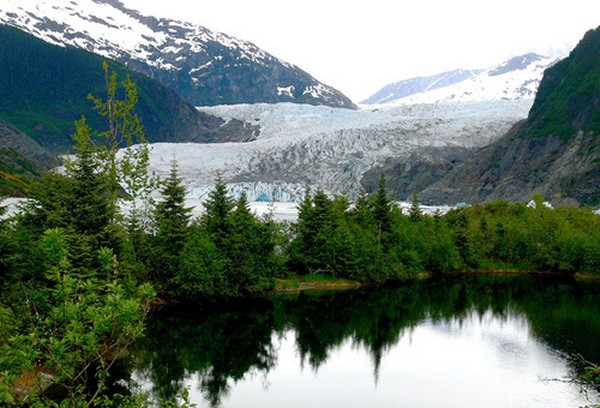
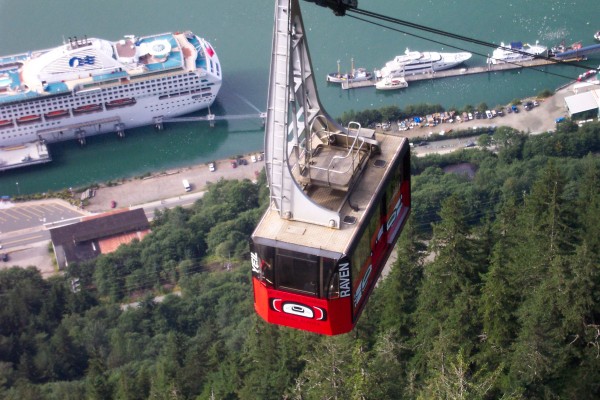
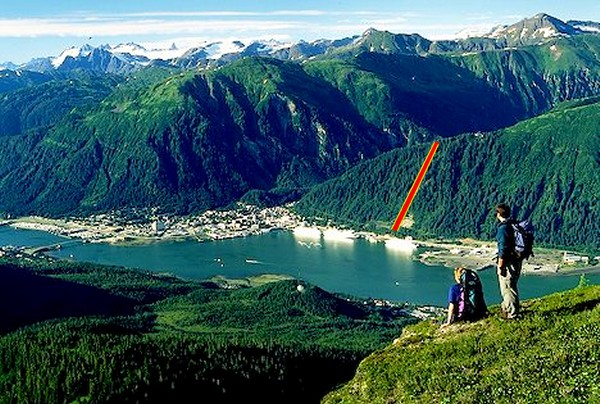
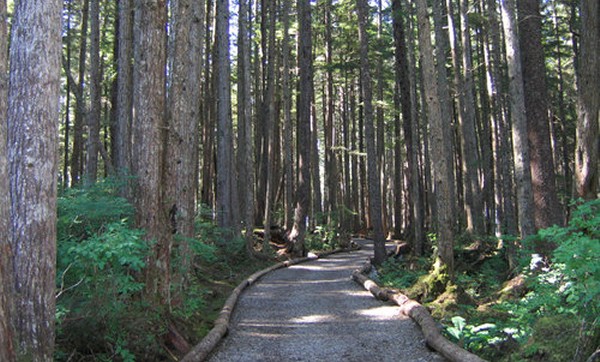
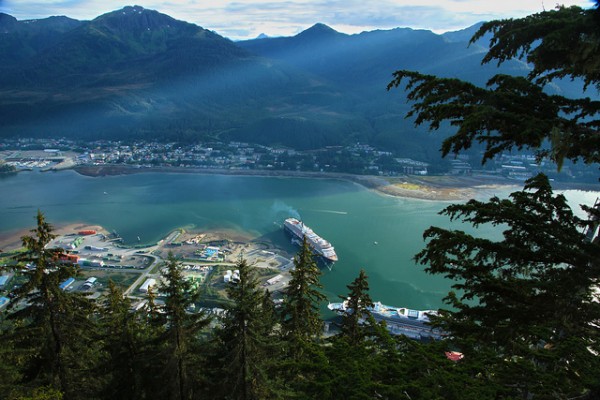
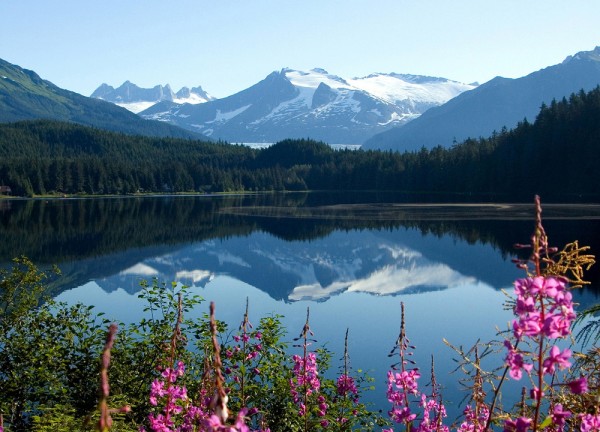 |
| |
|
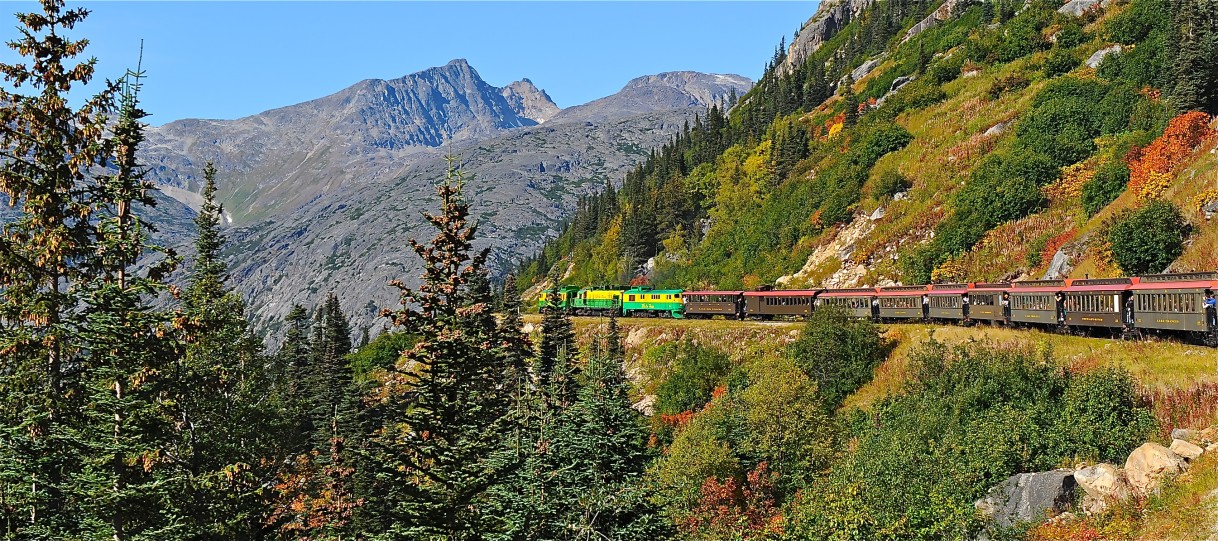 |
|
Skagway |
Skagway Alaska has a unique place in Alaska's history; known
as the "Gateway to the Yukon" during the Klondike gold rush.
Today, one can almost hear the cries of "gold in the Yukon"
echoing from canyon walls.
An improbable series of events placed Skagway, Alaska, in
the epicenter of the Klondike Gold Rush of 1898. Only two
years later, the Gold Rush was over, and treasure seekers
had moved on to Nome on Alaska's west coast. Today, Skagway
has a permanent population of less than 900, but during the
summer tourist season, the number swells into the thousands.
Klondike Gold Rush
Originally home to the Chilkoots and Chilkats Native
Americans, Skagway came to prominence when gold was
discovered along the Klondike River at Rabbit Creek in 1896.
This set off what would be known as the Klondike Gold
Rush of the 1890s.
In real estate,
everything is location location location. Skagway's
place in the Gold Rush actually started a few years earlier.
In 1887,
Captain William Moore of Canada accompanied a native packer
over a relatively unknown mountain pass in an area near the
Pacific Coast about halfway between Seattle and what is now
Anchorage.
Acting on a hunch that gold would
soon be discovered in the area, Moore settled at the foot of
the pass. He named the area Mooresville and waited for the
gold seekers to arrive.
Ten years later, as Moore
predicted, gold was discovered in Canada's Klondike region,
across the White Pass from Mooresville. Skagway
was inundated with prospectors because it offered the most
direct route into the back country. Overnight the
population swelled to approximately 10,000.
During this time, hundreds of
thousands of gold prospectors settled into the area in
search of fortune. Because of its proximity to the Yukon
where gold was plentiful, Skagway acted as the gateway to
the treasure, and the town grew both in size and structure
because of this sudden economic boom. By 1899, gold rush
fever had passed.
By 1898, the name Mooresville was
changed to Skagway, and the A rough frontier town,
Skagway was ruled by con men and good-time girls.
When gold was discovered in Nome in 1899, most
treasure seekers moved on to the next big
thing.
Now
Skagway was
nearly deserted. The town fell into ruin.
Today, Skagway with its sweeping
mountain and river views is a city of approximately 900
residents that embraces its place in American history.
Ironically, it wasn't the gold that put
Skagway back on the map but
rather the tourism of that time that came soon afterward and
remains to this day.
Saved by tourism in the 1920s,
Skagway today is a sort of living history center. Every
summer, hundreds of actors and historians recreate the
excitement of the Gold Rush for thousands of cruise ship
visitors.
White Pass and Yukon Railway
Marla's
Note: The name of the game in Skagway is to take the
train into Alaska's interior all the way to the Canadian
border. The scenery is unbelievable.
As it turns out,
the thing that saved Skagway was its train.
The narrow-gauge White Pass and
Yukon Railway was begun in 1898 to ease the crossing to the
Klondike gold fields but was not completed until 1900, when
the Gold Rush had already ended. Nonetheless, the railroad
proved vital for both shipping and passenger transport.
The railroad ceased operations in
1982, but was revived as a tourist train in 1988. The train
takes guests through steep climbs and cliff-hanging turns,
through tunnels and atop towering bridges, past glaciers and
picture-perfect waterfalls.
This train has
become practically a gold mine in itself. Tourists
love to line up for an exciting train ride deep into
Alaska's back country. They aren't disappointed.
The views one gets are both wonderful and memorable.
Klondike Gold Rush National
Historical Park
In 1998, Skagway was recognized as the Gateway to the
Klondike, and the town became one of four members of the
international Klondike Gold Rush National Historical Park
system. The National Park Service maintains a visitor center
and museum in Skagway and is responsible for the maintenance
of three additional buildings in town. Free guided walking
tours depart from the visitor center five times per day
throughout the summer tourist season. Led by national park
rangers, the tours are historically accurate and
professionally presented.
Red Onion
Saloon
The Red Onion Saloon, built in 1897, is one of Skagway's
most famous stops. Originally a pub with a brothel above,
the Red Onion epitomized Skagway's frontier appeal. Today,
actresses in period garb give tours of the brothel,
introducing travelers to some of Skagway's most notable
residents. Downstairs, the pub still serves up fresh Alaskan
fare and strong alcoholic beverages.
Downtown Attractions
Downtown Skagway is pedestrian friendly. Dozens of historic
sites, museums and entertainment options compete for tourist
dollars with shops and restaurants. Instead of planning out
your entire day, allow plenty of time to stroll through town
and visit the spots that catch your eye.
The Skagway Museum and Archives displays a diverse
collection of age-old treasures from the town's illustrious
history, wonderfully curated in a historic granite building.
And along the scenic Chilkoot Trail, hundreds of relics of
the past rest untouched for all to see. From age-old old
pick axes to decrepit wagon wheels, these tools of the
gold-mining trade were ditched by the original miners and
left to history.
The Days of 98 Show with Soapy
Smith has been performed continuously since 1930. During the
Klondike Gold Rush, no name was better known in Skagway than
Jeff "Soapy" Smith. An underworld boss from Denver, Soapy
decided to follow the Gold Rush to Skagway. He founded a
highly popular saloon, which served as a front for his cons.
Yet as depicted in the show, Soapy had a heart of gold.
Local Culture and Flavor
Known for its legendary seat during the Gold Rush boom,
Skagway is a sleepy town frozen in time. A plethora of
magnificent albeit quaint landmark buildings along the main
thoroughfare in town, Broadway Street, help to illustrate
what life was like during Skagway's heyday, when opportunity
and riches were as easy to find as the gold that everyone
was searching for. Walking along this historic 7-block
stretch, don't be surprised it you bump into residents
wearing late 19th-century attire from when the town came
into prominence.
|
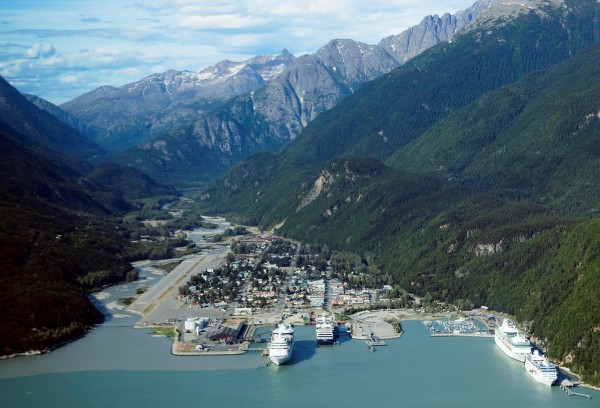
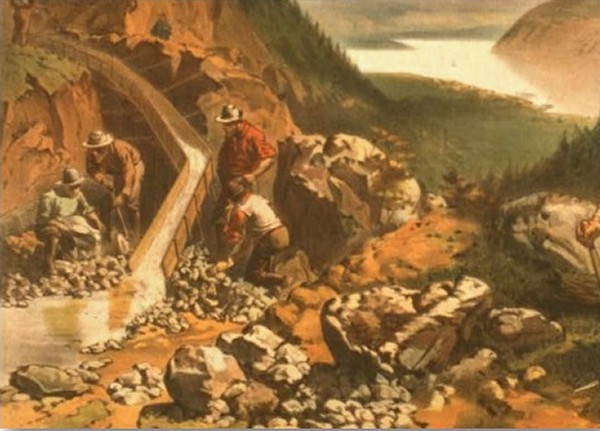
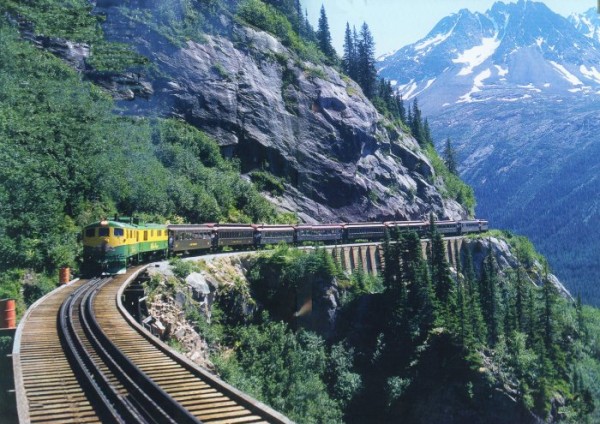
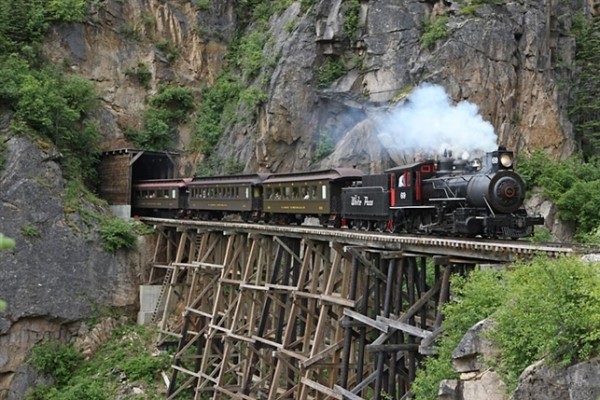
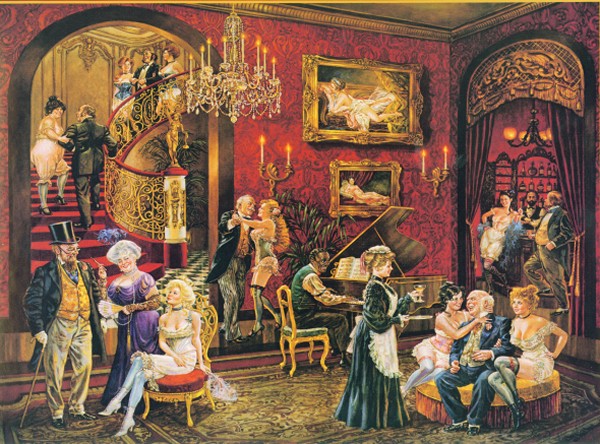
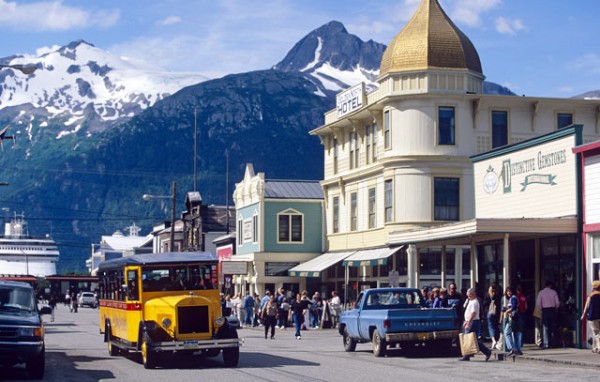 |
| |
|
|
Hubbard Glacier |
Nicknamed the "Galloping Glacier," this east Alaskan glacier
is rapidly advancing toward the Gulf of Alaska into a
pristine area known as Disenchantment Bay. In fact, its
movement temporarily formed a natural dam that twice closed
off nearby Russell Fjord from the bay, but the intense water
pressure building within the fjord-turned-lake has thus far
been enough to explode through the wall of ice.
The largest tidewater glacier in North America, Hubbard
Glacier measures 76 miles long and plunges 1,200 feet into
the depths of the bay. Its immense beauty and phenomenal
blue hues are enchanting, even from afar.
But it's when your cruise ship
draws closer that its towering surface really impresses,
dwarfing even the uppermost deck on your ship at a whopping
40 stories high. You can't help but gasp
as the cruise ship keeps getting closer and closer.
The ship stops about 200 yards from the ice.
There, with the snowcapped
mountains serving as a glorious backdrop, you'll have a
prime viewing spot from which to witness the glacier
calving, as it often expels icebergs the size of 10-story
buildings-imagine the splash!
When a glacier this big moves, people notice. And so it was
in 1986 when a pilot, flying over the giant ice mass,
noticed the glacier had moved forward, blocking the outflow
of nearby Russell Fjord. Trapped in the fjord, behind the
dam of ice, where seals, sea lions and dolphins, many of
them soon rescued by concerned citizens from all corners of
the world.
As the summer months passed, water behind the glacier dam
rose higher and higher, finally reaching a heights of 90
feet above sea level. On October 8th, it broke, releasing an
estimated 5.3 billion cubic meters of water back into the
bay, believed to be one of the greatest water discharges
ever recorded in North America.
While sailing up to the face of Hubbard Glacier, notice the
ever increasing numbers and size of icebergs floating
nearby. Notice the interesting, shapes, patterns of dirt and
rock, and the amazing shades of blue some bergs have. If you
are lucky, you'll see a seal or sea otter resting or playing
on or near the larger pieces of ice. Notice the birds as
they swoop down to the water from the nearby cliffs as sea
animals are disturbed by the constant hammering of ice into
the water.
As you get closer to the glacier, look to the east side of
the face and imagine it covering the entrance to Russell
Fjord. Now consider the fjord filling with fresh water, at
an amazing rate, and the pressure this wall of water is
placing on the ice dam. Think about the sea animals trapped
in this quickly becoming fresh water lake. Finally, picture
the glacier as the forces of nature overpower the mighty
glacier in a single moment with a thunderous crash and the
spilling of millions of gallons of water. This was nature at
her best.
When you get very near to the glacier's face and you look up
at the 300 foot wall of ice, listen carefully to the sounds
it generates. Bang! Pop! Creak! Boom! Even without calving,
the glacier speaks. Sometimes like rifle shot, the sound
echoes throughout the area. Then a groan. Note the variety
of sounds, sounds that you'll hear again and again as you
recall your visit to this awe-inspiring work of nature.
If you are lucky, and Hubbard seldom disappoints, you will
see chunks of the glacier, some as big as a 30-story
building, crash into the sea below. It begins with a few
chunks cascading down the face, and then in an instant,
thousands of pounds of ancient ice comes thundering down,
and an enormous wave propagates out into the bay. On a good
day, the show seems never-ending.
For a few lucky folks, the glacier treats them to a shooter.
A block of ice, sometimes as big as a bus, bursts through
the surface with a mighty splash as it reaches for the sky,
only to fall back into the sea. Often, the waves generated
by calving and shooters are big enough to feel in the
largest of ships. It's no wonder the captain never gets
closer than about a quarter mile from the glacier.
The area around Hubbard Glacier is also renowned for its
wildlife, where whales, harbor seals and otters swim, brown
bears, moose and black-tailed deer roam ashore, and a wide
variety of seabirds soar gracefully across the sky.
|
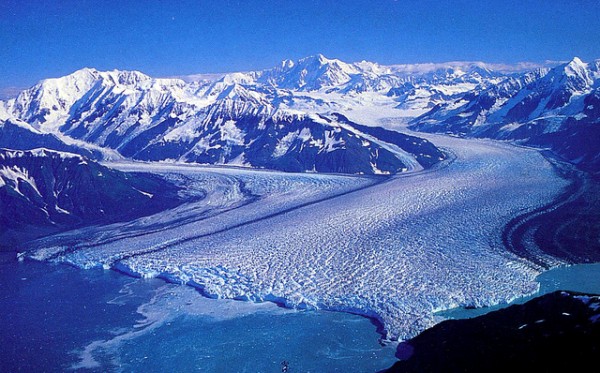
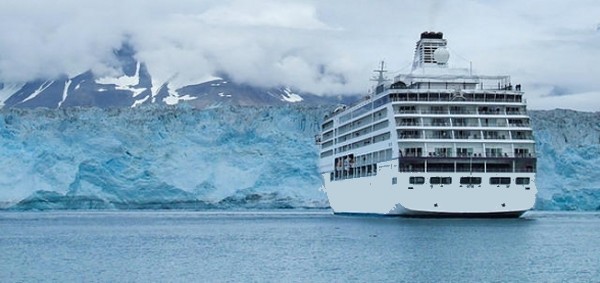
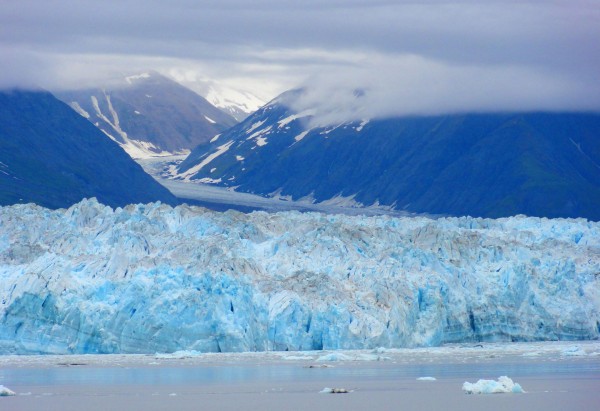
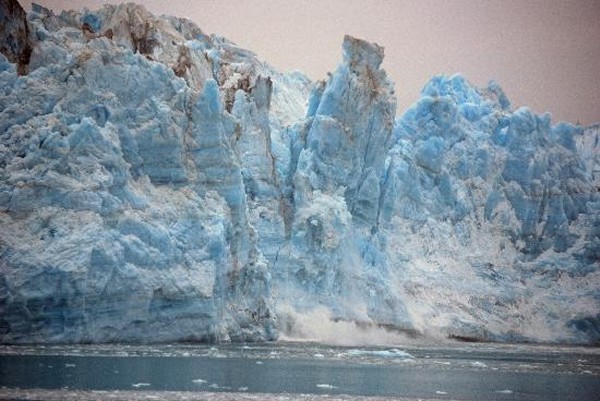 |
| |
|
|
Seward |
Seward is not
large, but it is a very important city in Alaska.
Seward is a sort
of Grand Central Station for transportation in Alaska.
For starters, it is located
at the terminus of both the Alaska Railroad and the Seward
Highway. And it serves as an
embarkation -
disembarkation port for many cruises,
including our trip.
Flanked
by rugged mountains to one side and sparkling Resurrection
Bay on the other, Seward has a
quaint downtown, fantastic hiking
nearby, plus a fascinating Alaska
Sea Life Center.
From Seward,
many visitors to Alaska head on to the interior of the
state. This town
of 2,619 residents is easily accessible from Anchorage yet
can serve as a base for anybody who likes to kayak, hike,
fish, whale-watch and glacier-view.
Overshadowing Seward is Mount Marathon, the scene of one of
Alaska's most famous and challenging foot races. A friendly
wager in 1909 resulted in this annual 3.1-mile run to the
top of the 3,022-foot peak. The race attracts advanced
runners from all over the world and is a highlight of
Seward's lively Fourth of July celebration, one of the best
in Alaska.
Things to do
The city also serves as the gateway
to Kenai Fjords National Park. Created in 1980, Kenai Fjords
spreads over 587,000 acres and is crowned by the massive
Harding Ice Field from which countless tidewater glaciers
pour down into coastal fjords.
The impressive landscape and an
abundance of marine wildlife make the park a major tourist
attraction. Many visitors take a day cruise along the coast
south of Seward to watch glaciers calve into the sea and
spot seals, sea lions and whales.
Another popular attraction in Kenai Fjords National Park is
Exit Glacier, which lies just north of town. This
road-accessible glacier offers an impressive up-close view
of the glacier along with information and hiking trails.
The more adventurous can rent a kayak and arrange a drop off
deep in the park to spend their afternoons paddling among
sea otters and their nights gazing at glaciers. There is
also a series of public-use cabins that can be rented in
advance. For more information on activities in the park
contact Kenai Fjords National Park.
History
Seward was founded in 1903, when
settlers arrived to plot construction of a northbound rail
line. By the time the Alaska Railroad was completed in 1923,
this ice-free port became the most important shipping
terminal on the Kenai Peninsula.
The city also served as the
southern terminus of the 1,200-mile Iditarod National
Historic Trail to Nome, long a major dogsled thoroughfare
via the Interior and Bush.
Like many towns in Southcentral
Alaska, Seward began a new era of history in 1964 after the
Good Friday Earthquake caused fires and tidal waves that
destroyed 90 percent of the town.
If you are curious, you can view
the slide show covering the earthquake, "Waves Over Seward",
in the public library.
|
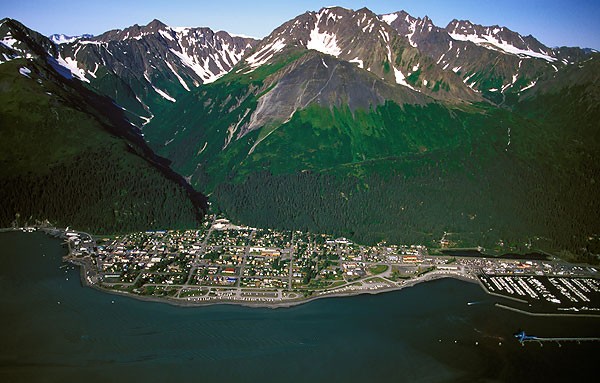
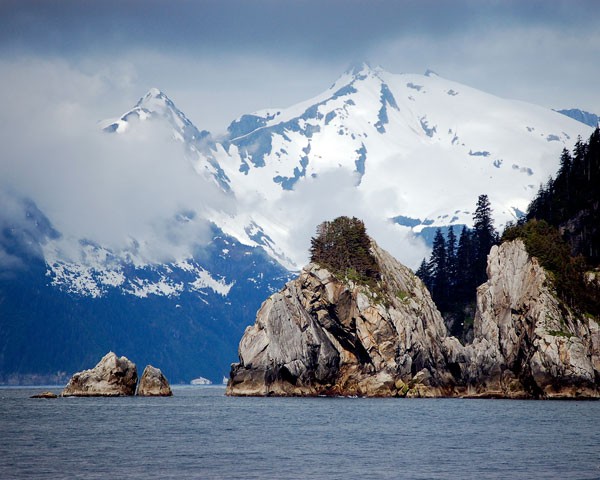
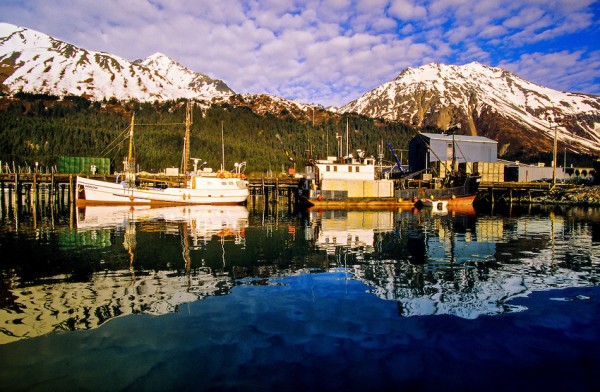 |
|
Cruise Tour Extension:
Anchorage, Denali, Fairbanks
(Marla's Note:
10-14-2013: SOLD OUT)
(Wait List
for cancellations only) |
Marla's Notes:
One of the frustrating aspects of a cruise trip is
that our destinations are limited to ports. As Rick is
fond of asking, why aren't there cruise trips to
Switzerland? As you can guess, I had to schedule a
river cruise just to shut him up.
That said, the
ocean cruise lines like Royal Caribbean are starting to
learn ways to add a "land component" to their offerings.
The Alaska "Denali Extension" is a prototype.
Many of us have
heard of the amazing Denali National Park located in central
Alaska and would love to visit it. There is only one
problem - cruise ships don't do well on land.
Fortunately,
Royal
Caribbean has devised an impressive 3-night Land option to
add on at the end of your cruise. After all, once you
are there, you will want to see as much as you possibly can.
At a Glance
Here is a brief
description of the Royal Caribbean package
June
20: Seward to
Anchorage to Denali
Upon arrival in Seward, you
leave the ship and board a deluxe motorcoach.
Your luggage will be stored on the coach.
From Seward,
you
can enjoy a scenic drive to Anchorage. Here you will
meet your Adventure Specialist.
While in Anchorage, time is
provided for lunch on your own.
Then it's on to the beautiful
destination of Denali. That evening
you will spend the night in a lodge in Denali.
June 21:
Denali and Fairbanks
In the morning, you'll depart on the Denali Natural History
Tour. Or if you wish, for an
additional charge, an upgrade to
the Tundra Wilderness Tour is available through your
Adventure Specialist.
Here you will discover
the beauty of taiga forests and gaze at miles of rolling
tundra and abundant wildlife.
In the afternoon,
you will board
a glass-domed traincars known as
the Wilderness Express for a luxurious ride to Fairbanks.
You will stay overnight in
Fairbanks.
June 22:
Fairbanks, Alaska
After breakfast, you'll enjoy a fun-filled day in Fairbanks,
including a Fairbanks City Tour and a tour of the Gold
Dredge 8.
You're afternoon is free to explore
on your own. Consult your Adventure Specialist for the many
options to choose from including a visit to the Museum of
the North or a ride on the Riverboat Discovery.
This riverboat tour is pretty
interesting.
June 23: Fairbanks, Alaska
After spending a second night in
Fairbanks, the next morning your Adventure Specialist will see that you are transferred
to the Fairbanks airport for your flight home.
|
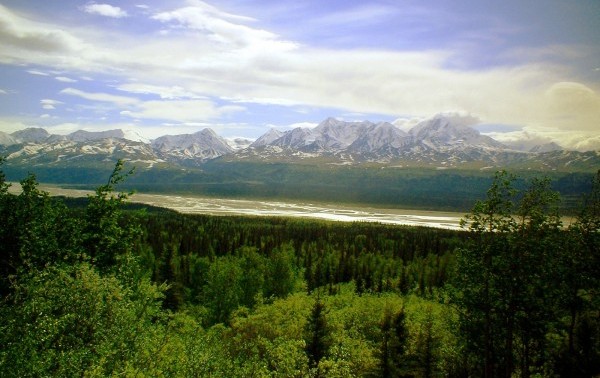
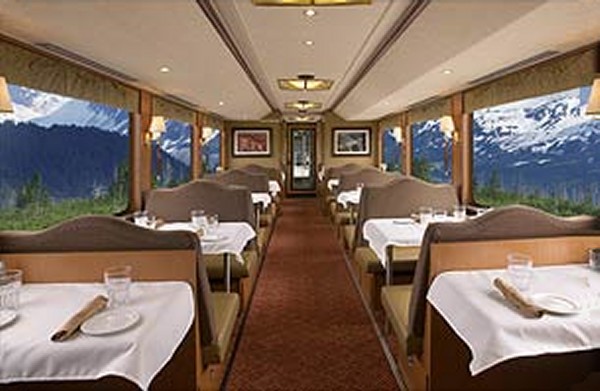
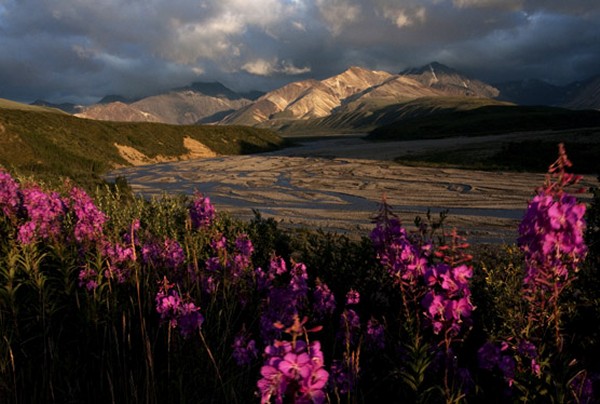 |
Five
Royal Caribbean Videos
Marla's Note:
Royal Caribbean seems to understand this Denali
Extension is a bit unusual. Consequently they have
prepared a series of videos that will give you a better idea
of what the Denali Extension looks like and what you can
expect. In all fairness, if you are on the fence
regarding this trip, I must warn you that viewing the Alaska
scenery will only serve to ratchet up the temptation to
join. So watch any of these videos at your own risk.
Besides the
video I have linked to, you will find links to four other
videos as well. The five videos help explain other
aspects of the Denali Extension. To an extent, these
videos overlap. For example, you will see some of the
same pictures in the different videos. That said,
taken together, the five videos definitely offer valuable
explanation and add enticing background scenery.
The Royal Caribbean Alaska Experience: Exploring the Last
Frontier by Land and Sea
|
 |
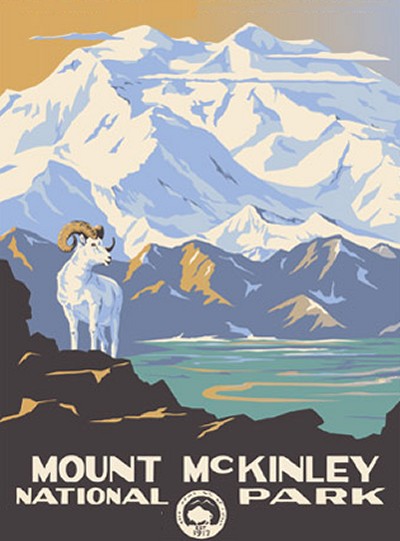 |
About Denali National
Park
"Denali" is what
the native
native Athabaskan Indians call the majestic peak
that is the tallest mountain in North America.
The
word "Denali" means "the high one" and refers to the
mountain itself.
The mountain was
given its Americanized name in 1897 by a local
prospector in reference to President William
McKinley. The President had just been
assassinated and perhaps the sentiment was to
remember him in some way. Unfortunately,
McKinley had never visited the mountain and had
absolutely no connection to the mountain.
A controversy
immediately developed.
The name 'Mount McKinley' was subjected to intense
local criticism.
That is putting it mildly. In actuality, that
name has long been considered a tremendous insult by
the people who actually live in Alaska.
Over the years as
respect for the rights of Native Americans has grown
in our culture, many people have come to agree.
Over the past century, people
have preferred to use 'Denali' as the name
for both the mountain and the park even though it
officially continued to have the McKinley name still
attached.
People assume the national Park
was established because of
majestic Mount McKinley. That is
incorrect. Charles Sheldon conceived the plan
to conserve the region as a national park.
His original intent was to
protect its large mammals from
hunters.
Naturalist and conservationist, Sheldon first
traveled here in 1906 and again in 1907.
Sheldon devoted much of his 1907
travels to studying boundaries for the proposed
national park that would include territories
suitable for a game refuge. When Sheldon returned to
the East in 1908, he helped
launch the campaign to establish a national park.
Largely due to these efforts, Mount McKinley
National Park was established in 1917. Its
population of Dall sheep and other wildlife were now
legislatively protected.
However, Mount McKinley itself was
only partially included
within the boundaries.
|
|
 |
Sheldon himself wanted to call the
park 'Denali',
but his suggestion would not be followed until 1980
when President Jimmy Carter ordered the switch that established
Denali National Park as the new official
name.
In
1980, the Alaska National Interest Lands Conservation Act (ANILCA)
enlarged the boundary by 4 million acres and redesigned it
as Denali National Park and Preserve.
At 6
million acres or 7,370 square miles, the park is larger than
Massachusetts. It exemplifies interior Alaska's character as
one of the world's last great frontiers for wilderness
adventure. It remains largely wild and unspoiled, as the
Athabascans knew it.
The
changes in names and boundaries that have occurred over the
years can be confusing.
Slowly but surely, over the years, the
name "Denali" has begun to dominate over "McKinley", but as
it stands today you will see both names at various times
when you visit the area.
President Carter's
renaming was a step in the right direction, but left the
issue of the mountain's "McKinley" name unchanged.
Size
Denali
National Park and Preserve exemplifies interior Alaska's
character as one of the world's last great frontiers for
wilderness adventure.
Denali
National Park and Preserve is managed as three distinct
units: Denali Wilderness,
Denali National Park additions, and Denali
National Preserve.
Denali, the "High One," crowns the 600 mile long Alaska
range.
Many generations of native Athabascans wandered over this
region before Caucasians began to discover and explore it.
Nomadic bands hunted lowland hills of Denali's northern
reaches spring through fall for caribou, sheep and moose.
They preserved berries for winter, netted fish, and gathered
edible plants.
As snow began to fall, they migrated to lower
elevations, closer to the river valleys' better protection
from winter's severe weather. Much of the Alaska Range
formed a mighty barrier between interior Athabascans and
Cook Inlet Athabascans to the south.
Denali
Wilderness, the former Mount McKinley Park, is managed to
maintain the undeveloped wilderness parkland character.
Backcountry use is regulated and most usual national park
regulations apply here. Denali Wilderness is closed to sport
and subsistence hunting and trapping activities.
Denali
National Park additions, established by the ANILCA in 1980
(excluding Denali Wilderness), allow customary and
traditional subsistence uses by local rural residents. This
recognizes the longstanding dependence on wildlife, fish,
and plant materials for subsistence in rural Alaska.
Denali
National Preserve allows subsistence uses and also allows
sport hunting, trapping, and fishing under Alaska Fish and
Game regulations. There are 2 such preserve areas.
Paradoxically this expansive landscape, habitat of large
caribou, moose, and grizzly bear, lies adorned with
miniaturized plants.
Their
diminutive size contrasts with their large importance as
food to the animals that live or migrate through here. These
plants have long been adapted to survive northern life, but
there is newness in the landscape too.
The rivers are so
young and so laden with pulverized rock, called rock flour,
that they can wander across their broad, flat valleys to set
new channels in a matter of days. The delicate beauty of the
tundra points to the lofty, isolated, and often
cloud-covered grandeur of the Mount McKinley massif.
The
Land
More
then 650 species of flowering plants as well as many species
of mosses, lichens, fungi, algae, and others grace the slops
and valleys of Denali. Only plants adapted to long, bitterly
cold winters can survive in this sub arctic wilderness. Deep
beds of intermittent permafrost - ground frozen for
thousands of years - underlie portions of the park and
preserve. Only the thinnest layer of the topsoil thaws each
summer to support life.
After
the continental glaciers retreated 10,000 to 14,000 years
ago, hundreds of years were required to begin building new
soils and to begin the slow process of re-vegetation.
Denali's lowlands and slopes consist of two major plant
associations, taiga and tundra.
The
Trees
First time visitors immediately ask where
all the trees are.
There are trees in
Denali, just not very many.
The problem is that Denali is very close to the northernmost
latitude in the Northern Hemisphere where trees can grow.
Extremely cold temperatures, especially when prolonged, can
result in freezing of the internal sap of trees, killing
them. In addition, permafrost in the soil can prevent trees
from getting their roots deep enough for the necessary
structural support. The high elevation of the park is
yet a third reason why trees struggle to survive.
Taiga, a Russian word for northern evergreen forest,
describes the scant tree growth here near the Arctic Circle.
Much
of the park and preserve's taiga lies in valleys along the
rivers. White and black spruce, the most common trees, are
interspersed with quaking aspen, paper birch, larch, and
baslam poplar.
Strands of deciduous trees occur along streamside gravel
bars or where soils have been disturbed by fire or other
action. Woods are frequently carpeted with mosses and
lichens. Many open areas are filled with shrubs such as
dwarf birch, blueberry, and a variety of willow species. The
limit of tree growth occurs at about 2,700 feet in the park
and preserve. For comparison, the elevation at the park
hotel is 1,750 feet.
Above
the tree limit, taiga gives way to tundra.
Tundra is a fascinating world of dwarfed shrubs and
miniaturized wildflowers adapted to a short growing season.
There are also two types, moist tundra and dry tundra, with
myriad gradations in between.
Moist
tundra varies in composition: some areas contain tussocks of
sedges and cottongrass; others contain dwarfed shrubs,
particularly willows and alders. Plants of the dry tundra
occur above shrubline. There, meadows abound. Higher up the
mountain slopes close to 7,000 feet, complete plant cover
yields to scattered patches amidst barren rock.
These
tiny highland plants grow closely matted to the ground,
creating their own livable microclimate. Mountain avens,
dwarf fireweed, moss campion, dwarf rhododendron, and
forget-me-not (Alaska's state flower) dot the rocky
landscape offering stunning summer displays of delicate
blossoms. Although small in stature they loom large in
importance because their nutrients provide food that
sustains even the largest species of park wildlife.
Wildlife of Taiga and Tundra
Spring, summer, and fall provide a compressed respite from
the sub-arctic's long season of deep cold. For most animals,
it is a busy time during which they must garner most of
their annual food supplies. Dall sheep, relatives of the
bighorn sheep, graze the alpine tundra for the young shoots
of mountain avens. Ewes and rams live apart in summer, while
the lambs are getting their start. In early summer sheep are
at lower elevations, but they will follow the snowmelt
higher and higher as summer progresses.
Caribou, like the Dall sheep, travel in groups. Both sexes
sport antlers, the only deer family members to do so.
Caribou migrate great distances from their calving grounds
south of the Alaska Range and northwest of Mount McKinley to
their winter range in the northern reaches of the park and
preserve. The Denali Herd has fluctuated greatly in number
over the last 30 years. Today groups of 20 or more may be
seen from the park road, quite different from the thousands
seen many years ago.
Moose,
the deer family's largest member, are not herd animals.
Bulls may group in threes or fours or wander alone until
they pursue several cow moose during the rut, or mating
season. The calves are born in May and will stay with the
cow one or two years. In spring, the cow and calf feed on
willows and other new green vegetation. At this time of
year, be cautious about traveling in the willow thickets. A
cow moose can be very dangerous while protecting her calf
from a perceived threat.
Wolves
are rarely seen, but they plan an important role in the
nature scheme. In winter, wolves generally hunt in packs.
Individuals, however, can be sighted as well. Pack
organization is strongest during the whelping (pupping)
season in spring. The presence of wolves in Denali is an
indication of the quality of this wilderness. If you are
lucky enough to see a wolf, consider it a rare and
privileged experience.
Grizzly bears are omnivores, eating small plants, berries,
ground squirrels, moose or caribou calves, and occasional
carrion. They are seen throughout the park. Sows generally
bear two cubs, sometimes one and rarely three. They too are
fiercely protective of their offspring. Wolves and grizzly
bears play an important role as predators. Ever ready to
take advantage of an opportunity, they cull old, newborn,
and sick animals from the caribou, moose and sheep
population.
Smaller mammals abound within the limits of this harsh,
northern environment: fox, weasel, wolverine, lynx, marten,
snowshoe hare, hoary marmot, red squirrel, ground squirrel,
pika, porcupine, beaver, shrew, vole and the lemming. There
are 37 mammal species recorded in the park and preserve.
Birdlife is varied and interesting. Most birds migrate long
distances between their nesting grounds here in the park and
their wintering areas. Wheatears winter in Africa; arctic
terns in Antarctica and southern South America; jaegers take
to life at sea in the southern oceans.
On the open tundra,
you may easily see ptarmigan, Lapland longspurs, and various
shorebirds. Short-eared owls and northern harriers can be
seen soaring low in search of rodents. Golden eagles patrol
the higher elevations and ridgetops.
Raptors - birds of prey
- of the spruce forest are the hawk owl and goshawk. In
these forests, you may also see the spruce grouse and varied
thrush. Plovers, gyrfalcons, mew gulls, and snow buntings
are among the 156 species of birds recorded at Denali.
Raven, ptarmigan, magpie, and gray jay are some of the
species that winter in the park and preserve.
Winter
challenges wildlife with frigid temperatures and the
cessation of plant growth. Food is scarce. Grizzlies fatten
up in the summer and remain in a torpor or deep sleep most
of the winter. Ground squirrels and marmots hibernate, their
body functions virtually halted. Beavers and red squirrels
hole up and subsist on food caches. Weasels, snowshoe hare,
and ptarmigan, however, turn white and continue the struggle
to survive above ground against extreme conditions.
As
one might gather, survival
in this region can be very difficult in this frozen
wilderness.
|
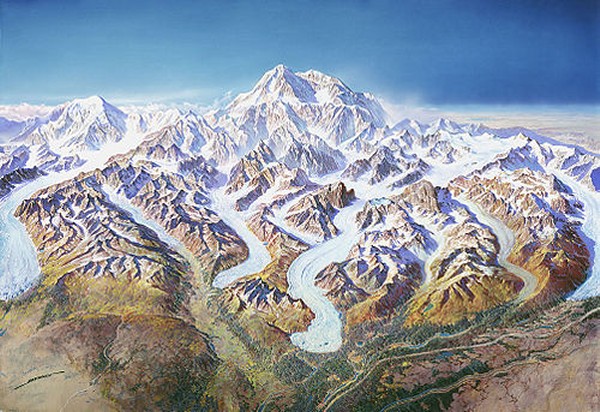
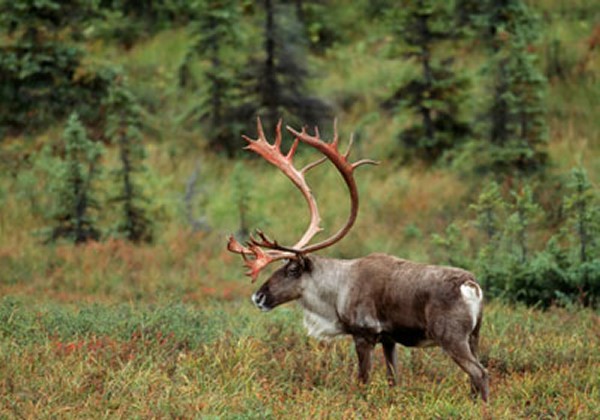
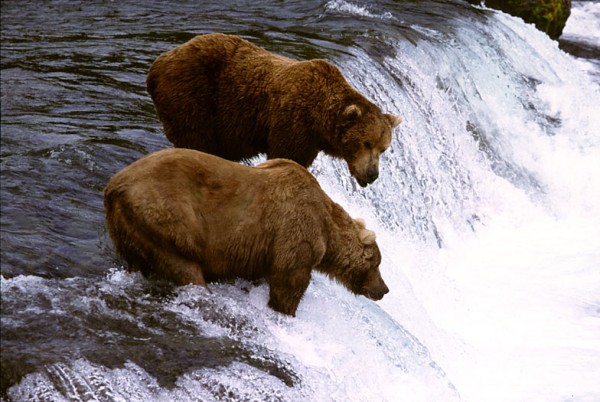
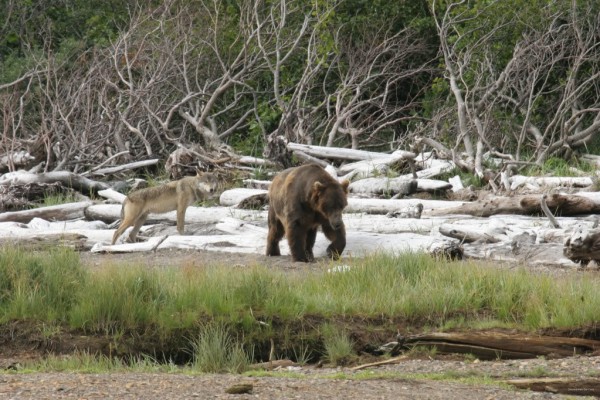
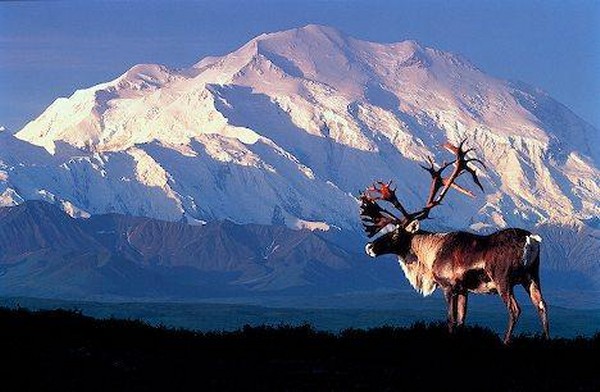
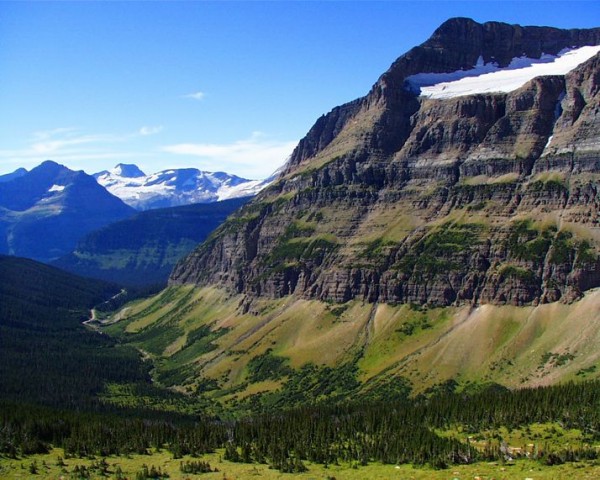
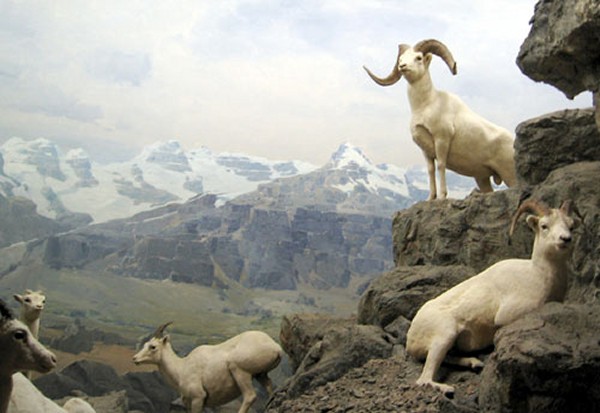
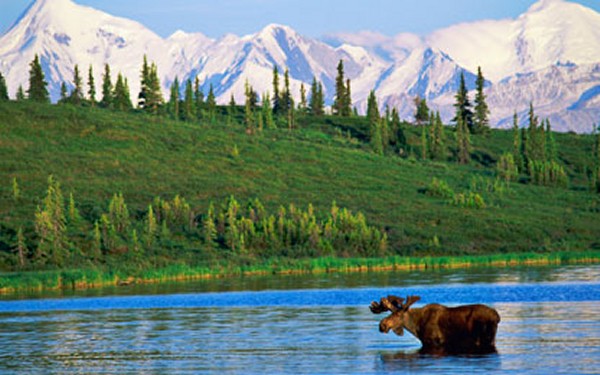
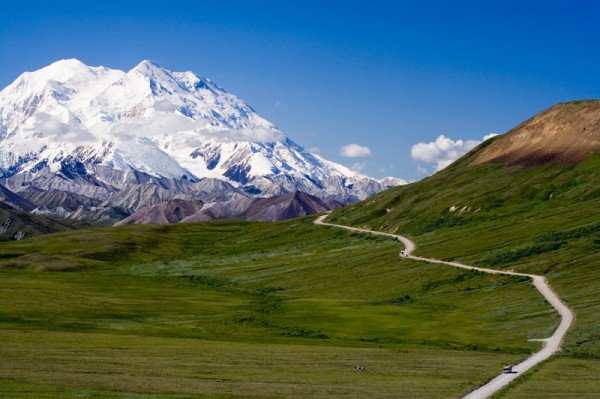
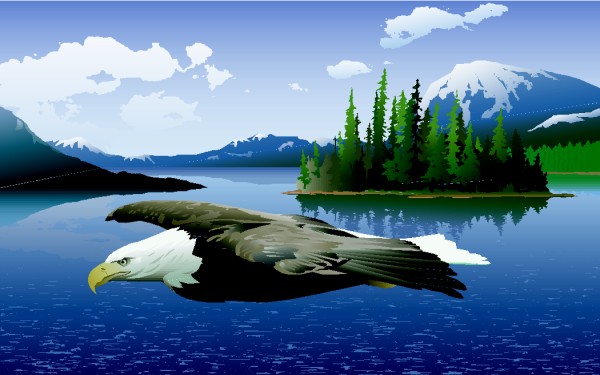 |
| |
|
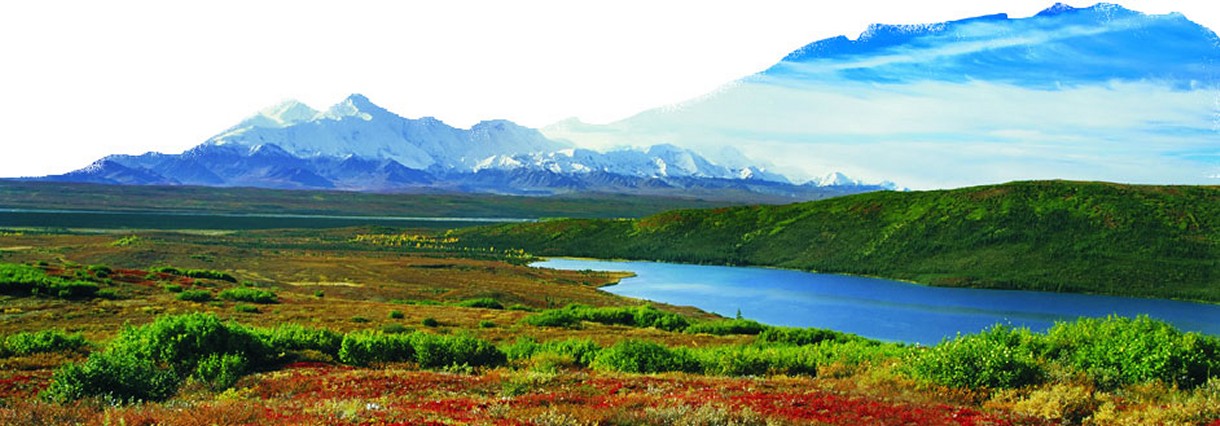 |
|
|
|
Marla's
Explanation Regarding the Denali Extension
|
Marla's Note:
As you can see, the price tag for this Denali Extension
is very expensive. For example, when Rick saw the price tag,
he commented that the price of the Extension was even more
than the price of an Inside Cabin on the cruise.
Rick asked me if
I thought the price was fair. I said I would find out.
Now I want to share what I discovered.
If you were to
purchase each place to stay and each transportation ticket
and each tour on your own, the list below covers what each
item on the trip would cost you.
|
Marla's Independent Travel Breakdown |
| 01.
Motor Coach from Seward to Anchorage: $59 pp |
| 02.
Motor Coach Transport from Anchorage to Denali: $86 pp |
| 03.
Grande Denali Lodge:
1 night @ double occupancy:
$350 |
| 04.
Denali Park Entrance Fee: $10 pp |
| 05.
Denali Natural History Tour: $68 pp |
| 06.
Train from Denali to Fairbanks: $121 |
07.
Pike's Waterfront Lodge or comparable (Fairbanks)
2 nights @
double occupancy: $420
|
| 08.
Fairbanks Gold Dredge Tour:
$40 |
| 09.
Riverboat Discovery Tour: $60 |
| 10.
Fairbanks City Tour:
$30 |
| 11.
Motor Coach from Fairbanks hotel to airport $20 |
|
Total:
$1264 |
Marla's Note Continued
Basically Royal
Caribbean is selling you everything I have listed above for
about $1,000.
Now let me
explain Royal Caribbean's pricing.
If you are in an
Inside Cabin, your add-on price for the Denali Extension
will be $1014. If you are in an Oceanview Cabin, your
add-o price will be $965. If you are in a Balcony, your
add-on price will be $815.
I understand that in a perfect world, the
price should be the same for everyone. I made that
exact point to my Royal Caribbean agent. The agent
shrugged her shoulders and said that's the way it is and it
isn't going to change.
That said, all
three prices are still significantly LOWER than the prices
you would pay if you did this same trip on your own.
I might add that
the chance to have everything conveniently arranged for you
ahead of time is a terrific benefit. Royal Caribbean has put
together an extremely well-organized package.
I would now like
to explain what Royal Caribbean offers on their Denali
Extension in more detail.
For starters, the RCCL Denali Extension
includes everything I listed above. Even better, what
you may not realize is there is a tour guide included with tour.
This is a definite
asset.
The Denali
Extension includes knowledgeable Adventure Specialists who
act as guides, historians and concierges.
They are by your side for the entirety
of the land tour, providing insider tips and local
perspective. He or she will be able to point out the many
natural wonders and explain the area's history and culture.
It's a definite perk
to have a resident expert along to
provide insight on one of the
most fascinating places on earth.
I might add the
transportation furnished by RCCL appears to be top of the
line.
On our trip from
Seward to Denali, for example, we will ride
in the newest fleet of deluxe
Prevost motorcoaches. These
specially designed motorcoaches
are complete with television monitors, adjustable
air vents, plenty of overhead storage, and foot rests.
It seems likely your transfer to Denali
will be done in pure comfort.
And
the best part about traveling by motorcoach on your
tour is that you will have the same driver and
motorcoach throughout the entire trip.
This means you will never have
to worry about your luggage, camera cases
and sweaters.
Everything will be there, safe and
available whenever you need it.
After Denali comes
a real treat. We will travel by train from Denali to
Fairbanks in the center of Alaska. We will travel
onboard the Wilderness Express, Royal
Caribbean's luxurious, glass-domed train. The
idea behind the glass is to maximize your viewing pleasure.
This train ride should be a marvelous opportunity to relax
in comfort and simultaneously view the incredible scenery of
Alaska as we ride to Fairbanks.
Summary
As far as I am
concerned, there is no doubt it is
expensive to travel to the interior of Alaska.
However, now that I have compared to RCCL's price and
package to what it might cost for me to do all this on my
own, I promise you that their price is more than fair.
If this is something you wish to do, you should not feel
taken advantage of. I didn't say it is "cheap".
What I am saying is that their price is fair based on Alaska
prices.
If you want to travel in the most hassle free manner without
having to plan a million individual details, the
RCCL
Denali Extension is the
clearly way to go.
Rick and I are
definitely on the Denali Extension. Our attitude is
that we paid a premium price to get this far. And now
that we are here, we want to see as much of Alaska as we
possibly can.
|
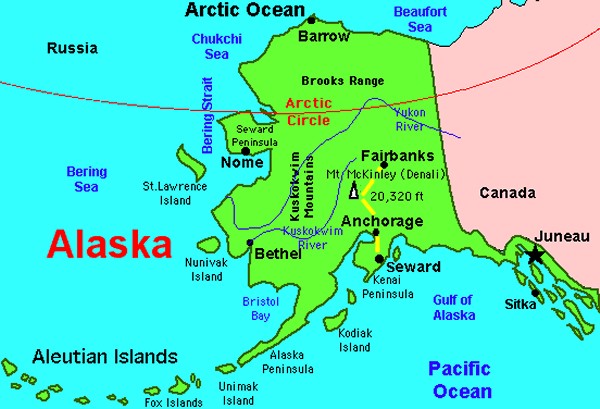
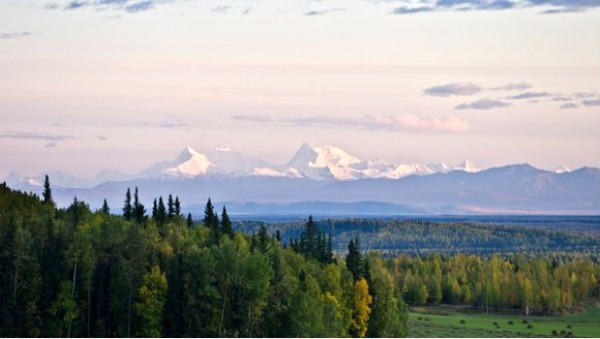
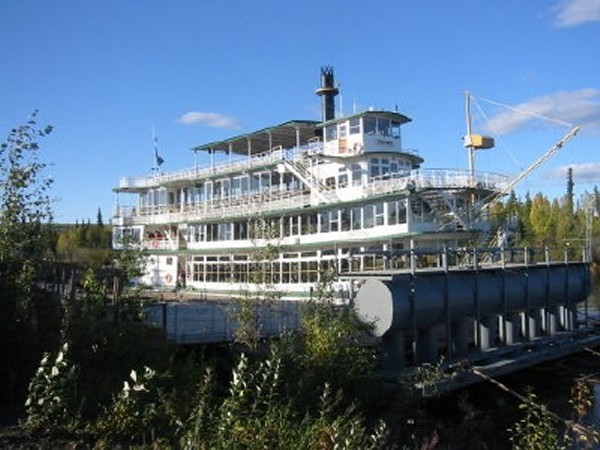
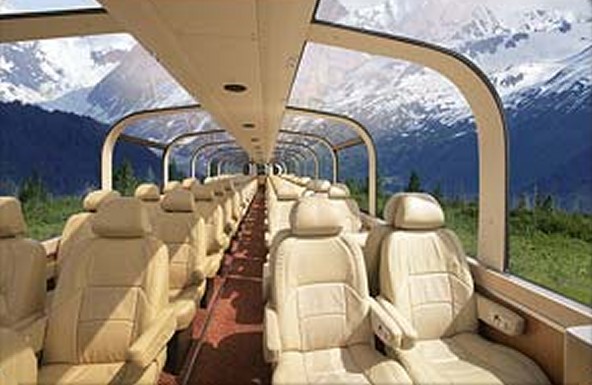
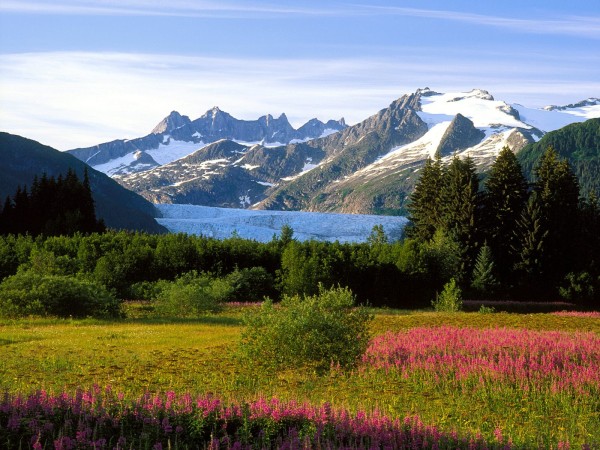 |
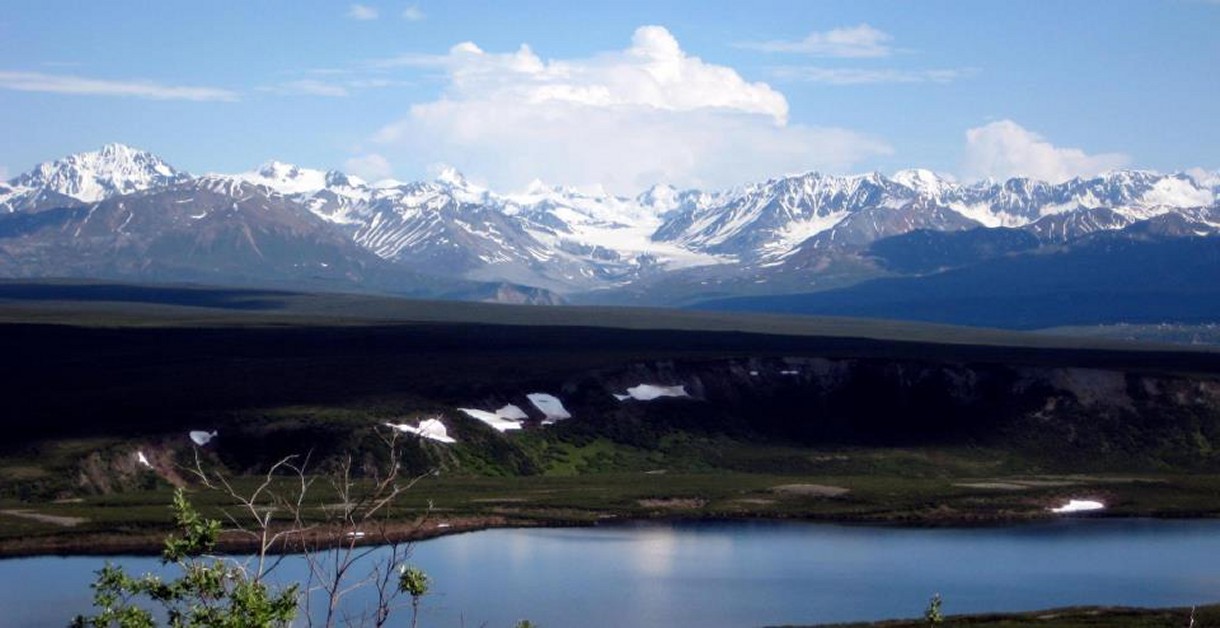 |
|